














CONTACT US:
Tel: 05 17 36 15 32
email: editors.etcetera@gmail.com website: www.etceteraonline.org 17 rue des Chaumettes 86290 St Léomer
etcetera magazine @etceterafrance
Welcome to the September edition of etcetera magazine.
We hope you have all enjoyed a fantastic (albeit shorter) summer. September is one of our favourite months. Everyone is getting back to their usual routines. Kids return to school, and holiday memories are still fresh in our thoughts but plenty of beautiful weather to enjoy.
Wishing you all a wonderful month ahead,

15 SAMU (Medical)
17 Gendarmes (Police)
18 Pompiers (Fire and also trained in medical emergency)
112 European emergency not always English
114 Text-message emergency number for deaf/hard of hearing
119 Child abuse
115 Homeless
Annual subscription France/EU only 55€ Card payment by telephone

Commercial adverts: Please see our Media Pack at www.etceteraonline.org
What’s On/Listings: 12€ per 50 words for a guaranteed spot or free (space permitting)
Classified listing: 6€ per 25 words plus 3€ per photo
Property listing: 10€ per 50 words plus 6€ per photo
Code APE 5814Z Edition de Revues et Periodique Siret 80903463000016. La Présidente G. Feasey Registered. Le Bourg, 87360 Verneuil Moustiers. Impression: Rotimpres. Pol. Ind Casa Nova. Carrer Pla de l’Estany s/n. 17181 Aiguaviva (Girona) Espagne. etcetera est gratuit.
While we always do our best to ensure the content in this magazine is given in good faith and businesses are reputable, we accept no liability for any errors or omissions and do not endorse any companies, products or services. Articles written are the personal opinions of the original authors and do not necessarily reflect the views of etcetera magazine.

113 Drugs and alcohol 1616 Emergency- Sea & Lake 3131 Last incoming call, key ‘5’ to connect Orange
English speaking helpline
0033 (0)9 69 36 39 00
Website in English: www.orange.com/en/home
Technical assistance for landlines (French): 3900 (+33 9 69 39 39 00 from abroad)
SFR 1023 or 00336 1000 1023 (Not English) EDF 8am to 8pm, Monday to Saturday. +33 (0)9 69 36 63 83 EDF Helpline in English 0033 562164908 (From UK)
E-mail: simpleenergywithedf@edf.fr
CPAM - 09 74 75 36 46
Veolia Water Emergency No: 24h/24 et 7j/7 05 61 80 09 02 (press 1 for urgent problems or 2 for a technician)
S.E.P Du Confolens (Water)
05 87 23 10 08 Emergency 24/7
Aéroport Int’l Limoges 05 55 43 30 30
SNCF (train times, buying tickets etc) 36 35
Credit Agricole English Speaking Helpline
Charente (residents only) 05 45 20 49 60
Alcoholics Anonymous
For contact details of meetings in your area including those conducted in English, visit www.aafrance.net
SSAFA France 05 53 24 92 38 email france@ssafa.org.uk
Please download
HOSPITALS
05 55 05 55 55 Limoges (CHU)
05 55 43 50 00 St Junien
05 55 47 20 20 Bellac
05 49 44 44 44 Poitiers
05 45 24 40 40 Angoulême
05 49 32 79 79 Niort
05 45 84 40 00 Confolens
Bereavement Support Network
English speaking support group for guidance on coping with bereavement in France. Personal and practical advice. www.bsnvar.org
Women for Women in France offering support to foreign-born (non-French speaking) women dealing with domestic abuse www.womenforwomenfrance.org
Counselling In France Counsellors, psychotherapists, NLP, CBT etc offering therapy in English to expatriates all over France on www.counsellinginfrance.com
French Health Insurance Advice line
CPAM English speaking Advice line: 09 74 75 36 46 (from France)
0033 974 75 36 46 (from other countries). The line is open from Monday to Friday, from 8:30 a.m. to 5:30 p.m.
NHS website : www.nhs.uk/using-thenhs/healthcare-abroad www.ameli.fr
No Panic France Helpline: No Panic UK helpline: 0044 1 952 590 545 11h - 23h (French time) 7/7 www.nopanic.org.uk /nopanicfrance@orange.fr
English-speaking Mental Health Line
SOS- HELP 01 46 21 46 46 3pm-11pm 7/7
British Consulate in Paris 01 44 51 31 00
British Consulate in Bordeaux 05 57 22 21 10 www.ukinfrance.fco.gov.uk/en/


































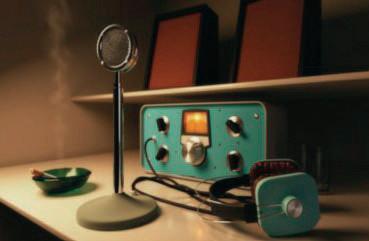

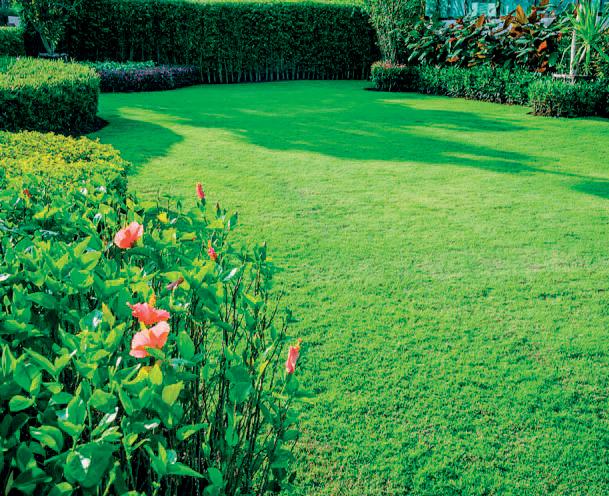





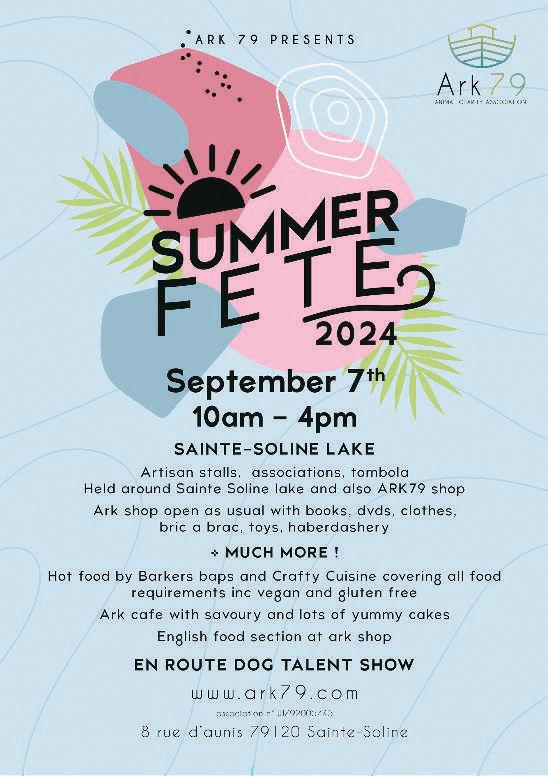





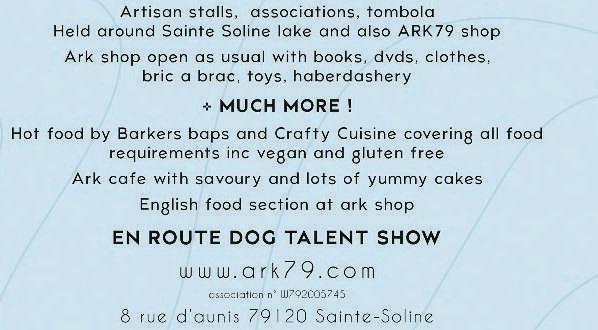




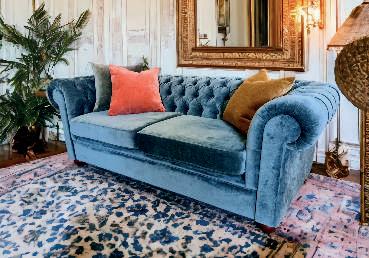












'Never, in the field of human conflict, was so much owed by so many to so few.'
Winston Churchill, PM of Britain in the House of Commons, 20th August 1940 'The Few' were the airmen of the Royal Air Force and The Fleet Air Arm, Royal Navy, who fought in the Battle of Britain in 1940. Today, of the 2947 men listed on the wall at the Battle of Britain memorial at Capel, on the cliffs between Dover and Folkestone, only one is living. On the 17th July this year Group Captain John Hemingway, DFC, celebrated his 105th birthday in his native Dublin.
The term 'The Battle of Britain' was already in use when it was being fought against the German Luftwaffe in the skies over Britain and The Channel. On the 18th June, in his 'This was their finest hour' speech, also delivered to the House of Commons, Churchill had said: 'The Battle of France is over. I expect that the Battle of Britain is about to begin.'
By Clive Anthony Greenwood
launched large day-time attacks on southern England, to 31st October, when the Germans launched their last mass daylight raid. Of course there was much aerial combat both before and after these somewhat arbitrary dates.
Remember too the young women plotting the raiders on large maps for commanders to decide their tactics
After the war was over, official historians decided that the Battle of Britain was fought from 10th July, when the Luftwaffe
Hemingway (age 21) with 85 Squadron at Debden in August 1940 running towards their planes during John's World War 2 service.

Most readers will have seen the 1969 film 'The Battle of Britain', the cast studded with stars of the screen. Remember the Hurricanes and Spitfires of Fighter Command zooming about the skies, one squadron piloted by Poles? Remember too the young women plotting the raiders on large maps for commanders to decide their tactics? Men died in the skies and in the Channel; women too died in the bombing raids. We should also remember the mechanics, radar operators, medical teams, etc who supported the aircrew. These, too included women. When I was in the RAF in Cyprus, the wife of my schoolteacher neighbour had serviced Spitfires during the war.
Most people are probably under the impression that the Hawker Hurricane and the Supermarine Spitfire were the only British aircraft in the Battle of Britain. This is not so. The Bristol Blenheim, with a crew of three, and the Boulton-Paul Defiant, a two-man aircraft

with a mid-upper gun-turret, were also used. However, they were found to be vulnerable and ineffectual so were withdrawn after many had been shot down. Both, however, later proved to be very successful as night-fighters.
So who were the pilots who won the Battle of Britain?
Volunteers willing to defy the laws of their country and risk their lives to defeat the tyranny of inhuman Nazism
Predominantly they were young British men, some very young. However, a total of 574, (101 of whom lost their lives), were from other countries, most notably Poland (141) New Zealand (127) Canada (112) and Czechoslovakia (84). There were thirteen French; ten, including John Hemingway, from the officially neutral Irish Free State; and ten from the USA, volunteers willing to defy the laws of their country and risk their lives to defeat the tyranny of inhuman Nazism.
Hemingway did not shoot down any enemy aircraft in the Battle of Britain, but he had had two 'kills' during the Battle of France which preceded it. In the course of the war he himself was shot down four times. Pilots who despatch five enemy aircraft are known in all Air Forces as 'aces'. 188 pilots - 6 per cent of the totalbecame aces but only 15 per cent of pilots would claim more than one 'kill', which puts Hemingway's performance in perspective. The first man to become an ace-in-a-day was a Czech, Sgt. Josef Frantisek, who flew with Squadron 303
(Polish), which did not become operational until six weeks into the Battle of Britain yet is believed to have had more 'kills' than any other squadron. This may have been because they were older, with combat experience when the Germans invaded Poland. It is often forgotten that Bomber Command and Coastal Command of the RAF also played important roles during the Battle of Britain.
After the war, John Hemingway continued to serve in the RAF, including in France with NATO. He was promoted to the rank of Group Captain, equivalent to a full Colonel in The Army, and retired in 1969. Interviewed now because of his great age, John humbly professes that he is not special or a hero. In remembering him, especially on Battle of Britain Day on the 15th September, we pay respect to all aircrew of all nationalities who served in the battle and all the men and women who supported them on the ground.

Hemingway (age 25) fixing up his plane during his World War 2 service in 1944


Create patterns using ink pads and stamps


LOW-COST AND EASY TO MAKE, THESE BOWLS MAKE GREAT DECORATIVE ITEMS FOR YOUR HOME
Once dried, this clay is not only strong and durable, but there is no firing or baking required. Air dry clay is a versatile product, allowing you to create items such as jewellery and candle holders, pot plants or decorative bowls.
Materials:
Air dry clay (white)
Rolling pin
Stamps
Ink pads
1. First of all, knead the clay until it’s soft and pliable. This makes it easy to work with.
2. Roll your clay out to about 3-5 mm thick. Any thicker and it will take longer to dry.
3. Apply ink to your stamp and press firmly onto the clay. Repeat until you have covered the clay with your stamped design. Try not to press too hard as you want to be able to lift the clay away from the surface easily and not stretch out the design.

4. Take your bowl and place it upside down on your clay.

Important!Always keep food and craft materials separate - these are not food-safe!


Cutting board
Sharp knife
A bowl, or set of bowls for your mould/s
Sandpaper
Varnish (optional)
5. Cut around the edge of the bowl with the knife.
6. Discard the remaining clay to leave the circle of clay behind that will form your bowl. Smooth any rough edges using your fingers and a small amount of water.
7. Carefully lift your clay circle and place it inside your bowl. Using your thumbs press the clay down gently into the bowl. (Try and apply even pressure as you work your way around the bowl, if you press too hard the clay can crease and the pattern warps.
8. Repeat until you have as many bowls as required and leave to dry overnight. As the clay dries and the water evaporates it will turn from a pale grey to white.
9. By the next day, the printed side of the clay should be hard enough for you to remove it from the bowl. You may find the clay is still damp where it's been touching the glass bowl. Try placing your bowls upside down on a baking cooling rack to allow both sides to dry fully.
10. Drying time varies greatly depending on the clay bought (see instructions on the pack) and the weather. In warm weather, the clay can dry quickly (around 36 hours) but in cold, wet weather it can take up to 72 hours.

11. When your bowls are dry, sand away any rough edges.
12. Leave your bowls as they are or seal with a layer of clear varnish (acrylic works).







www.etceteraonline.org








* ClosedTuesday10thSeptember * * ClosedTues1stOctober(Stocktake) *
www.chezchristies.fr 05.49.50.61.94
GENCAY(86) behind Mairie closedSundays&Mondays











Nous sommes en septembre, c’est le moment de s’inscrire à des groupes, des associations, des activités et des cours de français !
It is September, time to start joining groups, clubs, activities and French lessons!
Tout d’abord, il faut répondre à la question « Pourquoi apprendre le français ? », même si, pour beaucoup d’entre vous, c’est une évidence. Il devrait être évident pour chaque personne étrangère vivant en France et il est de plus en plus demandé par les autorités, notamment avec la nouvelle réglementation pour la délivrance du Titre de Séjour.
First of all, the question “Why learn French?” must be answered, even though, for many of you, it is obvious. It should be obvious to every single foreign person living in France and it is requested more and more by the authorities, especially with the new regulations for acquiring the “Titre de Séjour” (Residency Permit).

Vos Horizons !
Learning French Broadens
Your Horizons!
Si vous êtes en vacances en France, on s’attend à ce que les étrangers connaissent le minimum de la langue, comme les salutations, les mots de politesse et les mots pour demander quelque chose et un peu plus, en gros, autant que vous le pouvez. Ce sera vraiment apprécié.
If you are on holiday in France, it is expected that foreigners know the minimum of the language, like greetings, politeness words, and words for asking for something, and a bit more, basically, as much as you can. It will be really appreciated.

If you live in France, it is necessary to learn French in order to be able to communicate with everyone, but also to be able to understand the letters, bills, and telephone calls you receive every day, and, for example, to call the fire brigade / emergency ambulance / police / recovery car, to make an appointment at the doctor’s, to speak to the doctors and nurses, to ask for something you need, to explain what is wrong with your car at the garage…
De plus, et c’est important de le savoir, les Français seront plus patients et disposés / serviables si vous parlez un peu français. Parler français ouvre la porte à de meilleurs services et plus rapides. N’oubliez pas qu’apprendre le français est aussi une marque de respect envers le peuple français et la France, et c’est écrit dans la loi.
N’oubliez pas qu’apprendre le français est aussi une marque de respect envers le peuple français et la France
Moreover, and this is important to know, French people will be more patient and willing / obliging if you speak some French. Speaking French opens the door to better and quicker services. Remember that learning French is also a mark of respect towards the French people and France, and it is written in the law.
Si vous résidez en France, il est nécessaire d’apprendre le français afin de pouvoir communiquer avec tout le monde, mais aussi de pouvoir comprendre les lettres, factures et appels téléphoniques que vous recevez tous les jours, et, par exemple, d’appeler les pompiers / ambulance d’urgence / police / remorqueur, de prendre rendez-vous chez le médecin, pour parler aux médecins et aux infirmières, pour demander quelque chose dont vous avez besoin, pour expliquer ce qui ne va pas avec votre voiture au garage...
Vivre en France signifie que l’on vous parle et que vous êtes exposé au français en dehors des cours, vous devriez donc être en mesure de réduire le temps nécessaire pour l’apprendre, si vous pratiquez ici, bien sûr.
Living in France means you are spoken to and exposed to French outside the classes, therefore you should be able to cut down the time needed to learn it, if you practise out here, of course.
Vous Savez Maintenant Qu’il Est Crucial D’apprendre Le Français
Quand on Vit En France. Mais
Comment Apprendre Le Français ?

You Now Know That Learning French When Living in France Is Crucial. But How to Learn French?
Plusieurs méthodes peuvent être utilisées. Plus vous « jouez » et pratiquez, mieux et plus facile cela sera. La répétition est la clé du succès ! Mais, essentiellement, détendez-vous avec l’idée d’apprendre une nouvelle langue. N’ayez pas peur de faire des erreurs !
Several methods can be used. The more you “play” and practise, the better and easier it will be. Repetition is the key to success! But, essentially, relax with the idea of learning a new language. Don’t be afraid of making mistakes!
Il est important de savoir dès le départ que le français oral et le français écrit sont
presque 2 langues différentes. Par exemple, nous écrivons beaucoup de lettres dans des mots que nous ne prononçons pas. Nous faisons des « liaisons » avec des mots... Il est donc nécessaire d’apprendre le français à l’oral et à l’écrit.
It is important to know from the beginning that written French and spoken French are almost 2 different languages. For example, we write many letters in words that we do not sound. We make “liaisons” in words… So, it is necessary to learn both spoken and written French. Apprendre le français, comme toute autre nouvelle langue, implique beaucoup de mémorisation, et souvent, en tant qu’adultes, notre mémoire n’est plus ce qu’elle était auparavant. Cependant, cela

Language School
Secretarial


ByIsabelleVoisins
ne doit pas être une excuse pour ne pas apprendre le français, car tout le monde peut réussir. Tout dépend du temps que vous passez et du nombre de contacts que vous avez avec la langue française. J’avais une élève de 84 ans et elle réussissait bien.
Learning French, like any other new language, requires a lot of remembering, and often, as adults, our memory is not what it used to be. However, this should not be an excuse not to learn French, as everyone can succeed. It all depends on how much time you spend and on how much contact you have with the French language. I had an 84-year-old student and she did well.
Les mots-clés de la réussite sont : le temps que l’on consacre à apprendre, la
Bon courage ! Keep positive! Et à bientôt ! Isabelle Élargissez vos horizons avec CONTINENTAL HORIZONS ! Broaden your horizons with CONTINENTAL HORIZONS! Isabelle works for CONTINENTAL HORIZONS Language Centre in L’Isle Jourdain 86. She is a specialist Teacher of French as a Foreign Language with over than 27 years’ experience. Do not hesitate to contact her on 06 20 10 34 49 or 05 49 84 17 73
Learn French with Continental Horizons! Contact us by email: continentalhorizons@free.fr

motivation et la volonté et l’exposition à la langue française.
The key words of success are: the time you devote to learning, motivation and willpower, and exposure to the French language.
Voici quelques exemples d’activités à faire pour apprendre le français :
1. Inscrivez-vous dans une école de langue. Apprenez le français avec de vrais professeurs de Français Langue Etrangère (FLE), les SEULS SPÉCIALISTES pour enseigner le français à des étrangers.
faut travailler votre français plus longtemps par jour.
Here are some examples of activities to do to learn French:
1. Register with a language school. Learn French with real teachers of Français Langue Etrangère (FLE) (French Language for Foreigners), the ONLY SPECIALISTS to teach French to foreigners.
2. Learn in a good working environment: studious, friendly and pleasant. If you feel at ease, you will learn better and quicker.
Prévoyez un peu de temps chaque jour pour travailler votre français
2. Apprenez dans une bonne ambiance de travail : studieuse, amicale et agréable.
3. Soyez patient(e) ! Combien de temps avez-vous mis pour maîtriser votre propre langue ? Cela ne s’est pas fait si rapidement ! Avec une langue étrangère, comme le français, c’est la même chose.
4. Prévoyez un peu de temps chaque jour pour travailler votre français : réviser vos cours de français et faire des exercices en français. Le minimum de temps pour apprendre est de 15 minutes par jour pour un débutant, et tous les jours ! Plus votre niveau en français est élevé, plus il
3. Be patient! How long did it take you to master your own language? It doesn’t happen quickly! With a foreign language, like French, it is the same thing.
4. Plan some time each day to work on your French: revise your French lessons and do exercises in French. The minimum of time to learn is 15 minutes a day for a beginner, and every day! The higher your level in French is, the longer the time you need to work on your French per day.
En plus, pour vous aider à pratiquer le français :
▪ Regardez la télévision française avec les sous-titres. Les émissions signalées par, sont sous-titrées.
▪ Inscrivez-vous à la bibliothèque ou à la médiathèque pour emprunter des médias français.
▪ Inscrivez-vous dans une association locale française pour vous faire des amis français.
▪ Regarder des DVD en français avec les sous-titres en français.
▪ Écoutez la radio française.
▪ Écoutez des podcasts en français.
▪ Lisez des articles de journal en français.
▪ Lisez des livres en français.
▪ Écrivez des lettres / des emails en français.
▪ Parlez avec vos voisins français en français.
▪ N’hésitez pas à demander aux gens de répéter et de parler plus lentement.
▪ Parlez avec les commerçants (votre boulanger, votre boucher…).
▪ Étiquetez vos meubles avec leur nom en français. N’oubliez pas le déterminant (le / la ou un / une) !
▪ Jouez à des jeux en français (mots mêlés, mots fléchés, bingo, Time’s up, etc.).
▪ Organisez des moments d’échanges en français avec vos amis francophones.
▪ Utilisez un dictionnaire bilingue français-anglais.
▪ Utilisez un dictionnaire français-français.
▪ N’utilisez pas Google translation ! C’est incompréhensible !
▪ Jouez et amusez-vous avec le français !
▪ Et n’oubliez pas : vous avez le droit de vous tromper !
Also, to help you practise French:
▪ Listen to the French radio.
▪ Listen to French podcasts.
▪ Read newspaper articles in French.
▪ Read books in French.
▪ Write letters / emails in French.
Play French games (crosswords, word searches, bingo, Time’s up
▪ Watch French TV with subtitles. The programs with the sign mean they have subtitles.
▪ Register at the local library or mediathèque to borrow French books and press.
▪ Register at a local French association to make French friends.
▪ Watch DVDs in French with French subtitles.
▪ Speak to your French neighbours in French.
▪ Do not hesitate to ask people to repeat and to speak slowly.
▪ Speak with the shopkeepers (your baker, your butcher…).
▪ Put post-it labels on your furniture with its French name. Do not forget the article (le / la or un / une)!
▪ Play French games (crosswords, word searches, bingo, Time’s up, etc.).
▪ Organise moments to exchange in French with your French speaking friends.
▪ Use a bilingual dictionary French-English.
▪ Use a dictionary French-French.
▪ Do not use Google Translate! It is impossible to understand what comes out of it!
▪ Play with the French language and enjoy it!
▪ And do not forget: you have the right to make mistakes!
I have many tips available, thanks to my training and my 27+ year experience in teaching French as a Foreign Language to adults, so do not hesitate to contact me to get tailor-made solutions for you to learn French more efficiently.






ONE-TO-ONE / GROUPS
At Dino’s in Champagnac la Rivière (87150) or ONLINE CLASSES

r.sandrine.durand@orange.fr PLUS
Translations & Administrative Assistance Sandrine








THIS MONTH WE ENJOY WONDERFUL TEMPERATURES AS THE HEAT OF THE SUMMER SUBSIDES, THESE SIMPLE RECIPES ARE A PERFECT ACCOMPANIMENT TO THE MONTH
Summer went by quickly, now it’s time to get back to school. While the heat will remain with us for some time let’s finish off summer with some summer-like recipes.
We’ll start with a super easy chilled pea soup, a salmon tartare, crunchy fried fish tacos with a mango topping, and end with another easy recipe, grape sorbet. Simple foods, using fresh ingredients.
Refreshing peas, a little cream for body, mineral water for zest and you get this sweet and colourful soup.
Ingredients (4 portions)
4 cups sweet peas
4 cups crème fraîche
4 cups mineral water
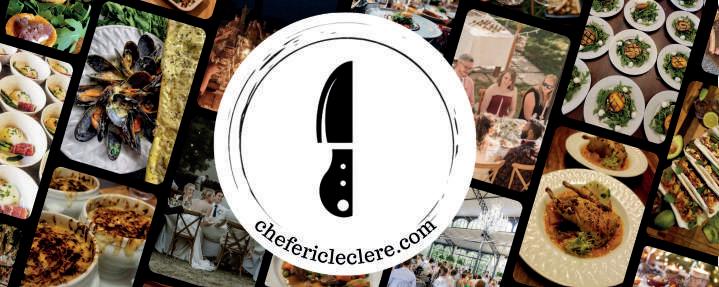

ByEricLeClere

Eric, a chef de cuisine of 20 years. Originally from Florida he is now based in the Limousin & caters all of France
www.chefericleclere.com
Instagram.com/chef_eric_leclere
1 cup spinach
Salt and pepper to taste
Citrus oil (for garnish)
Equipment: Chinois strainer/seive
Method
1. For fresh peas; lightly blanch, and then shock peas in ice bath. Or you can use frozen peas straight into the blender.
2. Add peas, spinach, crème fraîche, salt, pepper, and mineral water to blender. Blend until completely smooth.
3. Pass mixture through chinois. Repeat if not smooth or if you are losing too much product.
4. Serve well chilled, finished with a garnish of citrus oil.
5. Store in airtight container. Wrap container in foil so as to not let light in (light exposure will change the appearance).

We want to sneak in some more seafood before we get into autumn. Fresh cut salmon, and the variety of citrus used in this recipe come together for smooth tasting bites. You can enjoy this with breads, crackers, over rice, or even just as is.
Ingredients (serves 6)
500 g fresh salmon
2 medium shallots - brunoise
1 large Granny Smith apple - brunoise
1 bunch chives
2 tbsp Dijon mustard
2-3 tbsp orange juice
1 lime (juice of 1 lime fresh squeezed)
2 tbsp citrus vinegar
Salt and pepper to taste
Method
1. Take two medium non-reactive bowls, fill one with ice and set the other on top.
2. Lay salmon on cutting board and make sure it is free of bones, skin, and bloodline (brownish flesh).
3. Cut pieces into rectangles, then cut those widthwise into 2-3 thinner rectangles, cut those pieces into matchsticks, rotate to finish the brunoise cut and place salmon pieces in chilled bowl.
4. Add all other ingredients to chilled bowl and fold them into each other with a spatula.
5. Let mixture sit covered tightly in refrigerator overnight for best flavour.

Direct Sales
06 48 17 20 94 fermedeshirondelles16@gmail.com
Texel lamb - whole or half
Gascon noir porc - whole or half Hereford Beef and Veal - 10kg packs





(pictured page 18)
I know, I know, more tacos, but they’re fun! Again, we’re sneaking in some more seafood before autumn. A few more steps for these as we are going to fry this fish first.
Ingredients (makes 8 tacos)
500 g white fish, I prefer cod for this
1 kg flour
40-50 cl heavy cream
500 ml panko crumbs
To taste salt and pepper
To taste espelette
To taste cayenne
2 bunches coriander
3 mangos
3 medium shallots
2 avocados (sliced)
1 head napa (Chinese) cabbage (cut)
40 cl crème fraîche d’Isigny (only this brand)
8 small flour tortilla wraps Sriracha hot sauce (if you want spice)
Method - Fish
1. Start with 3 pie dishes, fill one with half the flour (500 g), the next with heavy cream, and the last with the remaining flour, panko, and spices.
2. Cut all of the cleaned cod into strips, ensure all bones are removed, and rinse lightly.
3. With fryer or oil preheated to 185°C, working in small batches, roll strips through plain flour, dredge through cream, and finally coat in the seasoned flour.

Visit our medieval château… Siret: 840796015 00013
Boutique-style accommodation with luxury pool. Chambres d'Hotes, Weddings, Parties & Celebrations. Private Dining.

86290 Brigueil-le-Chantre
Belinda and Lee Prince 06 50 32 63 54 www.chateaumareuil.com




4. Fry 2-3 pieces at a time and rest on a cooling rack in oven on lowest possible setting, you will need to turn pieces once or twice.
5. Serve on tortilla with choice accompaniments. We prefer ours stacked in this order with these toppings: napa cabbage, fish, mango salsa, avocado slices, drizzled sour cream, then finally sriracha.
Method - Mango Salsa
1. To cut the mango: holding the mango with one hand, stand it on its end,
stem side down. Standing up the mango like this you should be able to imagine the alignment of the flat oval pit inside. With a sharp knife cut from the top of the mango, down one side of the pit. Then repeat with the other side. Once the pit is removed cut away a small amount of flesh that was surrounding the pit. With the remaining two pieces cut lengthwise into long strips and then again widthwise without cutting to the skin. Remove squares by scooping out with a large spoon.
2. Mix this with *brunoise shallots and coriander. Add a splash of lime juice. Salt and pepper to taste.
Method - Sour Cream
1. Add 4 turns of fresh cracked salt to the jar and whip. Then place into piping bag or squeeze bottle. You can add a squeeze of fresh lemon juice to fully sour but I find it makes the mix too thin.
*Brunoise cutting technique - see May 2024 edition for full instructions: www.etceteraonline.org




Only using 3 ingredients you can make this decadent sorbet with no special equipment. It’s a great way to cool down on a hot day. A beautiful dessert or a nutritious snack for the kids ready in seconds! Let the kids help!
Ingredients (serves 4)
3 cups green grapes
2 tbsp sugar

Hotel du Diamant, 86460 Mauprévoir
Facebook:hoteldiamantmauprevoir Instagram@diamant86460
1 tsp lemon zest
1 tsp lemon juice
Method
1. Freeze grapes 4 hours in advance
2. In a blender puree the frozen grapes, scraping down the sides as needed.
3. Add sugar, lemon zest, and lemon juice to blender.
4. Blend until all ingredients are incorporated.
5. Place in freezer if necessary until ready to serve.
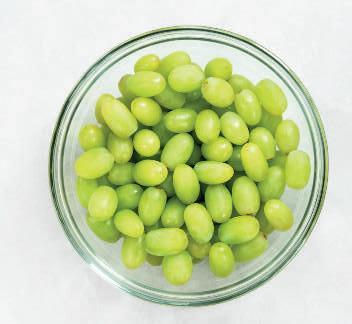


(5-6 days a week - closed Mondays) Tues/Sat 08h30 - 14h (lunch 12h-14h) and 18h-23h Weds 8h30 - 14h (lunch 12h-14h) Thur/Fri 08h30 - 14h (lunch 12h-14h) and 18h-21 Sun Fortnightly 12h-15h Brunch incl Full English and live music Home Made Pizzas • Fish & Chips • Brunch • Burgers • Artisan Ice Cream • Guinness on Draft • Local Cider • Bitter on Pump Pression Lagers • Regular Quizzes • Live Music Every Tuesday and Saturday • Regular Monthly Jam and Open Mic with

INDEPENDENT FINANCIAL ADVISER
deVere France
In this day and age, with market volatility the norm, investors are looking for any advantage to keep portfolios performing well. An actively managed investment portfolio could undoubtedly improve how a portfolio is structured and, in turn, offer better returns
What Is an Actively Managed Financial Portfolio?
What Are the Advantages of Actively Managed Investments?
The fund manager or asset manager in charge of the investment portfolio usually has knowledge or expert experience in fund composition. For example, the manager of an energy-rich fund will have extensive experience in the energy sector or have worked in the energy sector. At the same time, a global fund will have a manager experienced in international economics. So, the fund has the advantage of expertise.
There are certain tax advantages that actively managed funds could provide
Active management occurs when a financial advisor, money manager, or asset manager regularly tracks the performance of an investment portfolio and decides to buy, sell or hold the portfolio's assets to achieve optimum returns. The investment manager’s goal is to outperform a benchmark while simultaneously managing risk, achieving goals, mitigating tax or aligning with ESG standards. Analysis, tracking or forecasts are used to make discretionary or analytical decisions.
The fund manager has the discretion to change and review the assets in the fund at a moment's notice and the flexibility to increase the weighting in certain assets, introduce new assets to the fund, or even sell off poorly performing assets. There are certain tax advantages that actively managed funds could provide and fund managers can manage risk quickly. They can mitigate risk through hedging strategies.
The Role of a Financial Advisor or Portfolio Manager in Your Investment
A financial advisor or portfolio manager is essential for maintaining an optimised investment portfolio, helping plan the
financial journey, and investing in actively managed funds.
Ensure diversified funds - They will ensure that your investment portfolio is suitable and diversified to mitigate risk. This means investing in different asset classes like equities, bonds and cash, alternatives like real estate and art, sectors like financials, energy, and healthcare, or regions like the US, Asia, and Europe. These all ensure that if one area performs poorly due to volatility, other areas should continue to perform well.
Regular Reviews - Regular reviews ensure that your portfolio is being actively managed by making the necessary adjustments to investments to maintain optimum performance. They also help identify potential investment opportunities that align with financial goals and risk tolerance and determine if the existing asset allocation is still viable. Actively managed funds or portfolios have the advantage of a designated person managing the assets and making immediate decisions that can benefit the portfolio or fund's performance.
Please note, the above is for education purposes only and does not constitute advice. You should always contact your adviser for a personal consultation. * No liability can be accepted for any actions taken or refrained from being taken, as a result of reading the above.




deVere France S.a.r.l. are regulated by ANACOFI-CIF and ORIAS which will only recommend French regulated products.


Helen Booth works as a financial adviser for deVere France S.a.r.l and has lived as well as owned property in the Deux-Sèvres region. Having worked in the financial services in the UK for over 15 years, Helen prides herself in being fully diploma-qualified for the services that she provides. Helen has lived and worked in France for over 8 years and enjoys being part of deVere France S.a.r.l., a division of one of the world’s leading independent financial consultancies, deVere Group.
With over $10 billion of funds under its advice and administration and with more than 80,000 clients around the world, deVere Group truly offers a myriad of unique products and notes that are not available anywhere else in the market.

deVere France can advise you on ways to help safeguard and increase your wealth, as well as helping with HMRC-recognised pension transfers to a Qualified Recognised Overseas Pensions scheme (QROPS) to give you potentially more flexibility in your pension plans.
If you would like to know more about how deVere France can help you, contact
Helen Booth DipPFS , EFA : +33 (0) 77 171 2879 : helen.booth@devere-france.fr
en Assurance (ORIAS) numéro enregistré 12064640. Garantie Financière et Assurance de Responsabilité Civile Professionnelle conformes aux articles L 541-3 du Code Monétaire et Financier et L 512-6 et 512-7 du Code des Assurances. Registered name: deVere France S.a.r.l, registered company number RCS B 528949837, 29 Rue Taitbout, 75009, Paris, France. Gérant: Mr. Jason Trowles. Registered with ANACOFI-CIF (National Association of Financial
conforms to article L 541-3 of the Monetary and Fiscal Code and L 512-6 and 512-7 of the
In France, transferring the ownership of a second hand French registered vehicle is streamlined through the Agence Nationale des Titres Sécurisés (ANTS) website. This guide will walk you through the necessary steps, from preparing the required documents to completing the transaction.
Preparing for the Ownership Transfer
Before diving into the ANTS process, gather all the essential documents:
1. Proof of Identity: A valid passport or French identity card, along with your residence permit (carte de séjour or visa) if applicable.
2. Proof of Address: Recent utility bill, rental agreement, or any official document dated within the last three months.
3. The Vehicle’s ‘Carte Grise’: The vehicle registration document, which should be crossed out and signed by the seller, along with the date and time of the sale.
Once you have your account set up, you can begin the process of transferring ownership of the vehicle:
1. Log In to Your Account: Enter your credentials and access your dashboard.
2. Select the Appropriate Service: Click on ‘Immatriculation’ then ‘Acheter ou recevoir un véhicule’.
3. Enter the Vehicle’s Information: Input the vehicle’s registration number and other relevant details from the Carte Grise.
4. Upload Required Documents: Scan and upload the necessary documents.
5. Review and Confirm: Carefully review all the entered details and uploaded documents. Confirm that everything is accurate before proceeding.
Once your application is approved, ANTS will calculate the registration fee based on the vehicle’s characteristics
4. ‘Certificat de Cession’: A document signed by both the buyer and the seller, available on the ANTS website.
5. The Cerfa form 13750*07: Filled in and signed by the buyer, available on the ANTS website.
6. The Seller’s ANTS ‘Code de Cession’: Before you can register the vehicle in your name, the seller must declare on the ANTS website that the vehicle has been sold. ANTS will generate a code that the seller will give to you.
7. The proof of ‘Contrôle Technique’: if the vehicle is over 4 years old, then a proof of MOT done less than 6 months ago is required.
Creating an ANTS Account
To start, you need to create an account on the ANTS website, if you don’t already have one. You’ll need to use the FranceConnect option. This will enable you to use either your Impôts, Ameli, MSA, France Identité, YRIS or La Poste Identité Numérique account to log in to ANTS.
ANTS will then process your application. This typically takes a few weeks to a few months, depending on their current workload. They can also ask for extra information or documents during this processing period.
Once your application is approved, ANTS will calculate the registration fee based on the vehicle’s characteristics (age, power, CO2 emissions, etc.). You will be prompted to pay this fee online using a credit card.
After the payment is made, different documents will be available in your ANTS account:
1. Provisional Certificate: You will receive a provisional certificate of registration (Certificat Provisoire d’Immatriculation), allowing you to legally drive the car while waiting for the final Carte Grise.
2. The Proof of Payment of the Carte Grise: The receipt along with the breakdown of the price.
3. The Recap of the Carte Grise Registration Application.
The final Carte Grise will be mailed to your registered address. As it’s an official

ANGLO FRENCH HELP contact@anglofrenchhelp.com
document, you will have to sign for it. This document is essential as it legally proves the vehicle’s ownership.
While the ANTS website is designed to be user-friendly, you might encounter some common issues:
Document Quality: Ensure all uploaded documents are clear and legible. Blurry or incomplete documents may cause delays.
Incorrect Information: Double-check all information entered to avoid mistakes. Incorrect details can lead to application rejection.
Payment Problems: If your payment fails, try a different card or contact your bank.
Stay Informed: Regularly check your email and the ANTS website for updates on your application status.
Conclusion
Transferring ownership of a French registered vehicle through the ANTS website is a straightforward process if you follow the necessary steps and prepare all required documents. The ANTS platform ensures that second hand vehicle ownership transfers are handled efficiently, reducing the bureaucratic burden on buyers and sellers. By adhering to this guide, you can navigate the process with confidence and soon enjoy your new vehicle on French roads.


This is Allianz’s normal assurance vie product. Basically, it has all the same advantages regarding French inheritance law, death duties, and income tax as any normal assurance Vie. However, it is a Clean Share contract, so you gain more on shares as the fees are less and more transparent.
Who can invest in it: Anybody who is a French resident (and Monaco) and under 85 years old.
How much can you invest in it: The minimum is 30 000€, no maximum.
How is it invested: As you wish, all secured and all in shares, bonds or a bit of both at whatever percentage you prefer.
Options available:
1. Securisation des performances: This is a very good option that means that when your shares/funds go up by 5% (you can choose between 5 and 15%), the 5% gain is automatically transferred to the secure part of your assurance vie. The gain has to be at least 100€ (5% gain on a share might represent less if your share is only worth 500€!!). This is very good and some of my customers appreciated this option when the market crashed back in March 2020 (Covid). Indeed, the gain they made the previous year had been transferred to the secure part of the assurance vie so the loss was less.
2. This option is free, so no fees.
3. Dynamisation progressive du capital: Some of you might be not too keen to invest all your eggs in one basket in case you are investing it all just before a crash (so at its highest) so Allianz has come up with an option in which your capital is invested over a period of your choice: 6, 12 or 24 months. So that you are investing at different stages of the stock market value. This



option is also available when you make another deposit, not just when you open the investment.
4. Arbitrage: This is the French word for switching from one fund to another. With Allianz you are entitled to one free per year but can do as many as you want. So, if you are not happy with a fund, you can switch at any time you want.
5. Gestion profile: If you are not willing to trust me or yourself to choose your funds, you can let Allianz manage it for you. You can choose between 7 types of investment between very low risk to high risk. 2 of those investments are fully ISR (investment socially responsible). Allianz readjust the investments 4 times per year following their own expert advisers, so you have nothing to do.
amount you have invested to start with so 100% or 120% of what you have invested. So, if the market crashes, you are sure that your heir will get at least what you wanted them to have or more! You invested 100K but lost 10K, you die, then your beneficiaries still get 100K and not 90K.
You can choose to make sure that your beneficiaries will get at least the amount you have invested to start with
7. Fidelity option: Allianz gives you the option to earn extra money (10% more on average) on the “fond euro” which is the secured part of the investment. In return you have to refrain from making any withdrawals for 6 years.
Fees:
Entry fees: The entry fee is normally 4.5% of the amount invested but I am very nice, so I negotiate. There is also a 12€ administration fee (whatever the amount invested).
6. Securisation du capital: You can choose to make sure that your beneficiaries will get at least the
Management fees: The management fees can be changed once a year and depend on the TME of France which is the average
Isabelle Want 06 17 30 39 11 Email: isabelle.want @bh-assurances.fr
22 rue Jean Jaures.
16700 Ruffec
Tél:+33 (0)5 45 31 01 61
10 Bd du 8 mai 1945
16110 La Rochefoucauld
Tél:+33 (0)5 45 63 54 31
102Avenue de la République
16260 Chasseneuil sur Bonnieure
Tél:+33(0)5 45 39 51 47
2 Avenue de la Gare
16270 Roumazieres-Loubert
Tél:+33(0)5 45 71 17 79
rate of borrowing of the French state. (See Table 1)
In 2023, the TME was above 1.5% so the management fees for 2024 are 1.175% if you have less than 150K of capital invested. Note that the management fees on the Euro Funds if you have chosen the Fidelity option are 1.403% no matter the amount. The management fees on shares does not depend on the TME so it is the same every year. (See Table 2)
This contract is a “clean share” assurance vie contract which means that there are no commissions given on distributors of shares (sort of management fees for units). Those commissions are hidden in other assurance vie contracts (was also on ExAllianz contracts as well). So, you might think these are steep fees, but they were higher before (around 0.5% more)!! You just did not see it as they were taken on Funds units!
To sum up, if you have 140 000€ invested, 50% on shares and 50% secured (no fidelity option), then the management fee per year (based on TME above 1.5%) will be 997.50 + 822.50= 1850€
Option fees:
▪ 0.25% per year for the Gestion profilé option (0.25% of the amount invested on gestion profilé)
▪ 0% fee for switching from Fond euro to shares or shares to another shares. 1.50% of the amount for switching from
Table 1
shares/funds to Fond euro (maximum 5000€).
▪ Between 0.071% (age 41) and 3.406% (age 85) quarterly maximum for the option of the capital guaranteed in case of death. The percentage is taken on the amount of the loss and depends on the age of the subscriber. This fee is only taken if the capital is at loss.
▪ Disability option: 0.018% quarterly of the value of your investment.
your investment if you take it out before the 6th year.
You can set up monthly, quarterly, twice a year or once a year automatic withdrawal
Adding money to it: You can add money to it at any time but a minimum of 450€.
Regular withdrawal: You can set up monthly, quarterly, twice a year or once a year automatic withdrawal which goes directly to your bank account. This is free.
Regular deposit: You can choose to do regular deposits (monthly, quarterly, twice a year or once a year) so the amount you choose to add to your assurance vie is taken automatically from your bank account.
Availability: The present amount on your assurance vie is always available and you can even make the withdrawal yourself from your Allianz customer account. So, the money is never blocked. There are no penalties for taking your money out, but tax may apply if you have made a capital gain. Note that if you took out the fidelity option, then no gain on the secure part of
How much it makes: Well, that is what we all want to know right! Gross return for 2023 for the secured part with the fidelity option was 4.44%. For the Euro funds without the fidelity option, it was 4%. Shares go up or down! 2023 was a good year and all our funds gained apart from shares on China! And when you look at the return over 5 years, all (apart from China) are positive. But performances of the past are no guarantee for the future! I can send you the listing with past performances.
Conclusion: The advantages of the assurance vie savings account are well known and it is no secret that it is the preferred investment for French people not only because of its advantages but also for its flexibility. But even if assurance vie investments offer the same envelope with every company (same advantages in regard to French inheritance law and tax and income tax), it is important to notice the little differences and therefore shop around before making a decision. Allianz has a solvability ratio that is one of the best on the market at 174% for Allianz France and 200% for Allianz Group so do not hesitate to contact me for any further information regarding our very large range of investments.
Table 2




Running your own trade business can be incredibly rewarding but comes with its fair share of challenges. From managing multiple projects to handling day-to-day tasks, the pressure can quickly become overwhelming. Establishing efficient processes and systems is crucial to keeping things running smoothly and ensuring long-term success. This article examines why structure is essential for self-employed tradespeople and how it can transform business operations.
The Role of Processes and Systems Processes and systems might sound complicated, but they’re just organised ways of doing things. This could be as simple as a task list or as sophisticated as invoicing software. The goal is to bring consistency and reliability to your operations, reducing the mental load so you can focus on what you do best - your trade. Combining solid business management skills with your trade expertise sets you up for a successful and sustainable business.
customer relationship management (CRM) system can automate follow-ups and ensure every customer feels valued, boosting satisfaction and loyalty.
Scheduling: Scheduling can be a nightmare if you rely on memory or adhoc methods. Missed appointments or double bookings can damage your reputation. A digital calendar or scheduling app keeps you on track with real-time updates and reminders, ensuring you meet every commitment and build trust with your clients.
Common barriers include poor time management, lack of organisational skills, inadequate systems, overcommitting, resistance to change
Marketing: Attracting new clients and growing your business requires effective marketing. Without a structured approach, it’s easy to miss opportunities. A marketing system can streamline your efforts, from social media management to email campaigns.
experiences. Inconsistent service and communication can lead to negative reviews. Processes and systems ensure positive customer interactions, leading to better reviews and a stronger reputation.
Legal and Regulatory: Compliance with industry regulations is crucial to avoid legal issues. Simple accounting software can help manage tasks like record-keeping and documentation, which are essential for tax returns and dispute resolutions.
For the Business Owner
Inefficiencies lead to financial losses, increased costs, stress, burnout, reputation damage, and missed opportunities. Disorganisation wastes time and resources, reducing profitability and growth potential.
For the Clients
Inefficiencies cause project delays, rushed or incomplete work, increased costs, and client frustration, potentially leading to disputes.
Critical Reasons for Having Processes and Systems
Communication: Good communication is the backbone of solid customer relationships. Without a clear process, it’s easy to miss or delay responses, frustrating potential clients and driving them elsewhere. Simple tools like a

Service Quality: Inconsistent work quality can lead to complaints and costly rework. Clear guidelines and checklists for each job ensure you consistently meet high standards, reducing errors and enhancing your business’s reputation.
Cash Flow Issues: Stable cash flow is critical for any business. Without a financial management system, invoicing and payment delays can create cash flow problems. An invoicing system ensures prompt billing and effective payment tracking, improving cash flow and helping you manage expenses and plan for your future.
Income: Inconsistent billing practices can make income unpredictable, complicating planning. A standardised billing process ensures all clients get billed correctly and on time, providing a steady income stream and allowing you to make informed decisions about growing your business.
Scalability: As your business grows, managing multiple projects and clients becomes more complex. Established processes make it easier to scale, delegate tasks, and handle increased workloads smoothly, enabling business growth.
Reputation Management: Reputation is built on service quality and customer
Common barriers include poor time management, lack of organisational skills, inadequate systems, overcommitting, resistance to change, and insufficient training. Additionally, pride, fear of judgement, perceived costs, lack of awareness, and time constraints prevent seeking help.
Investing in business management courses, adopting technology, working with a business mentor, conducting regular process reviews, delegating tasks, and networking with other tradespeople can significantly improve efficiency and organisation.
Finally…
Processes and systems are vital for selfemployed tradespeople, enhancing customer relations, service quality, financial management, and operational efficiency. While the initial setup requires effort, the long-term benefits outweigh the costs. By implementing simple processes and systems, the improved efficiency impacts long-term success in your business.
This is a bumper year for elections, firstly in the UK (hurrah!) then here in France (phew!) with the big one in America to come (everything crossed). Coincidentally, I’ve noticed that, of the myriad quotations to be found online, falsely attributed or simply made up, a sizable chunk of them involve Winston Churchill, (I particularly enjoyed his views on Taylor Swift). One remark he did make, however, is “Democracy is the worst form of government, except for all the others.” Why? Well, let’s meander back across the years to a time of elegance and civility, a bygone era of voluminous ball gowns and improbable moustaches. Okay, I lied. It’s June 2016 and we’re in Croydon. Specifically, it’s a high street café alive with a hubbub of voices, busy staff weaving about and the background hiss of coffee machines. There are probably sausages.
idea of someone else being voted into power triggered unhinged levels of panic. Yet, when these titles grasped that theirs was a losing battle, some simply switched sides. On the morning of the election both The Times and The Sun, having found themselves chasing, rather than shaping, public opinion, were urging their readers to vote Labour, unintentionally recalling the 19th century French activist Auguste Ledru-Rollin, "There go the people. I must follow them, for I am their leader."
These corporations, mostly owned or controlled by interests based outside of the country, exert considerable influence over British life
Conspicuous among the throng is a brighteyed young BBC reporter, sent to do a “Vox Pop” as it’s known in TV world, from a Latin phrase meaning the voice of the people. He’s gathering views concerning the upcoming referendum on Britain’s membership of the European Union. He approaches a lady sitting alone. Moving a protective arm around her mug of tea, she declares, “Before you ask, I’m voting ‘NO’”. Our BBC chap is a tad confused since, after more than 40 years of membership, the choice is either to remain in the EU or to leave. He asks for clarification. The lady clarifies. “I don’t think we should join”, she tells him.
I watched that clip at the time, it was followed by a thudding sound as my chin hit the table. Since then, however, Croydon Lady appears at my shoulder whenever important elections loom. Her delicate cheese-grater voice reminds me that not everyone pays attention to the news or follows the doings of their government. Many people have no idea what the hell is going on but still vote. In fact, millions of us mark our “X” in a particular box believing we are exercising our free choice when, in reality, we are susceptible to influences of which we are often only vaguely aware.
As soon as the UK’s General Election date was announced British newspapers hit the ground running. Some (have a guess) immediately pivoted their front pages from haranguing traumatised people in dinghies to bellowing pro-government propaganda spiced with nasty personal attacks on opposition figures. The very
Democracy (literally “rule by the people”) relies on a properly informed public making a free choicebut informed by whom? Last year a group called the Media Reform Coalition reported that three companies – DMG Media, News UK, and Reach plc –pretty much control 90% of the UK’s newspaper market. These corporations, mostly owned or controlled by interests based outside of the country, exert considerable influence over British life. Thus, powerful vested interests are able to push their opinions and preferences disguised as “news”. Whatever your views on Donald Trump (I’m not permitted to print mine), the relentless cheerleading of the Fox News TV channel is largely responsible for his political career.
In fact, democracy’s inherent problems attended its birth 2,500 years ago when the Greeks restricted voting to an elite; “rule by the people” meaning in reality only a select few of them. Globally, the
Brian White lives in south Indre with his wife, too many moles and not enough guitars

masses mostly didn’t get a say in choosing their leaders until the 20th century; women largely had to wait until the years between the World Wars with France dragging its feet until 1944.
But for all its flaws and inconsistencies, (in the UK the people’s verdict must be approved by the monarch!), a public ballot brings a fair and equal society closer than any alternative. Denied one, ordinary folk have risen up and swept aside dictators previously thought invincible; in the mid1970s alone, Spain, Portugal and Greece achieved this almost simultaneously. But peril lurks in the habitual whinge of the jaded and the lazy - “What’s the point of voting? They’re all the same”. The threat is not fascism, it’s apathy. Think elections are boring? There are always those who would relieve us of that tedium, as Mr Trump has already hinted.
The term “democracy” can often come across as a lofty philosophical concept debated long ago by white men in togas. In reality, it’s a wild ride: life-affirming, infuriating and frequently scary.
Protecting our freedoms surely means learning to see through the lies and the omissions, recognising the fake and the cynically provocative. Above all, it means caring about what’s going on. Croydon Lady notwithstanding, I reckon Winston Churchill had it about right in his assessment, “The people must decide” is still the least worst show in town.


MOST PEOPLE START THERAPY BECAUSE THEY WANT CHANGE, EVEN IF THEY DON’T KNOW WHAT THAT CHANGE MIGHT LOOK LIKE
Often they dread working towards identifying where change could benefit their quality of life. After all, it is scary starting a process of which you don’t know the outcome. And they fear the process that they are unfamiliar with, leaving them in the hands of an ‘expert’ who will tell them what to do.
But that is not how it works of course. The only expert on their life in the room with me is that client, so my role is to first and foremost help them realise this.
Some of the areas where therapeutic work can be done are also fairly vague to the client. For instance, if I say I struggle with low self-esteem, what does that even mean? And even if I have figured that out, then how do I go about achieving better selfesteem? In short: if I want to achieve a goal, then I need to define first what my goal is exactly. I can’t work towards something if I don’t know what that something is. So let’s try to define selfesteem and see if it resonates with you.
I then ask, “On a scale from zero to ten, where would you like your self-esteem to be?” And quite often the client is fairly conservative in their answer, being careful not to bite off more than they can chew. “A five would already be great.” And I may then say, “Maybe it is a wise choice not to aim too high for now, we can always work our way up even more later if you would wish to do so. So you said you are at one or two on the scale, and since you want to get to 5 then you have to gain three or four units. Do you think that this is achievable?”
What we do in reality is divide the mountain into manageable molehills, the numbers just make the process more visual
Self-esteem relies on external factors such as the successes and achievements that we use to define our worth. These factors can often be inconsistent leading to someone struggling with feelings of unworthiness. This is often confused with self-worth which is the internal sense of being good enough and worthy of love and belonging from others. You might say, “Great, now I understand what I am dealing with, but it still feels like a mammoth task to change my level of self-esteem, it is based on so many patterns and formed by so many experiences and external factors…. How do I make that into a goal, where do I even start? It feels like an impossible task because my patterns are so ingrained that I lose all hope.”
This is where the numbers come in. In solution-focussed therapy we can use scales to create perspective and hope. Numbers create some form of clarity and direction. When a client says, “My selfesteem has reached rock bottom,” then to them at least, it feels the lowest of the low, an impossible task to raise it to a healthy level. But when I ask, “On a scale of zero to ten, where would you put your selfesteem?” The client might answer one or two, then we establish that they haven't quite hit rock bottom yet, and their perspective starts to slowly change. Having a more realistic perspective helps to work out what the next step or a realistic goal can be.
Even when what these units precisely mean is not defined, the fairly low number we set seems achievable and this creates hope. We can then break it further down. To get from one to two, so to go up by just one unit, what small changes do you think you can make? At this point we start the process of creative thinking, finding solutions or changes that the client can make, however small, to raise that number. The impossible all of a sudden becomes possible, one step at the time. The client now has more belief or hope that they can change how they feel by making changes in thought patterns, in the way they can set boundaries, change their responses to others (for instance learning to accept compliments and praise in this example) or question and possibly change some more practical day to day circumstances.


Originally from Belgium, Rafaël has run private practices in the UK and France, working with individuals or couples on a huge range of issues
rafael@a-therapy.com t. 07 83 23 77 23
Advert on page 30
After a while, we can revisit the scale. “How would you score your self-esteem now on a scale from zero to ten?
Remember that the last time you felt like you were at one or two.” The client is quite likely to score higher, and even if it is just one point, it is progress and that creates a sense of success, a little dopamine hit, which in turn creates motivation to carry on down this path. So again we can now look at which changes the client can make to get from two to three, one step at the time. What we do in reality is divide the mountain into manageable molehills, the numbers just make the process more visual and create the ladder the client can climb step by step.
This simple technique can be used in so many different situations or issues, and once learned can even be implemented in everyday life, no need for the assistance of the therapist. It is just one of those skills which can help us on our journey of self development. It can be used to set goals, evaluate our progress, motivate us to carry on and allow us to give ourselves a medal when we reach that goal.



The French Agency for Food, Environmental and Occupational Health & Safety (ANSES) recently made a statement that we should reduce our consumption of nitrite and nitratecontaining foods to a maximum of 150g per week. Nitrate-containing foods include all processed meats like deli ham, hot dogs, bacon and turkey. They say “Concerning nitrites, over half of our exposure is related to the consumption of delicatessen meat due to the nitrite additives used to prepare it.” Part of my work as a naturopath and nutritionist specialising in oncology is to uncover truths and myths, to help people get access to information that serves their best health and that is what this article is precisely about.
Nitrites
are now being investigated for their beneficial role in high blood pressure
Nitrites are used as a preservative in cooked meats. You would be forgiven for thinking that nitrites in bacon are bad for you. Our supermarket shelves stock ‘Nitrate Free’ bacon and ham like it’s a selling point and you pay more for it too. We have been told for decades now by various heart health authorities that bacon is bad for us because it has artery-clogging saturated fat (you need saturated fat, I have covered this in another article) and it’s full of nitrates, and you’ll find your friends and well-meaning loved ones telling you that you are asking for a heart attack by so much as even looking at a packet of bacon on the shelf. When we think about what we have been told about heart disease and how that works, we think about all the fats we eat floating around in our arteries, bunching up and causing obstructions which eventually kill us. It doesn’t work like that though. In fact the damage done to the sides of your arteries is done by sugar and if you do suffer from high cholesterol, it’s not eggs you need to give up, or bacon for that matter, it’s bread, pasta, cake, sugar in your tea, biscuits and those sweet treats, it’s fructose that is being shown to cause the damage. (Tokita et al, 2005) (Bray G A, 2012).
Nitrates are a naturally occurring substance. They are present in many vegetables, especially in beets, spinach and pomegranate but you might be surprised to
know that the largest amount of nitrates/nitrite exposure doesn’t come from outside the body (exogenous) your body actually makes it (endogenous). You produce between 70-90% of all the nitrites in your body, in your saliva. It seems that ANSES don’t have it quite right then, according to the latest research. It’s pretty amazing to learn that 1 serving of rocket or 2 servings of butter lettuce or 4 servings of celery or beetroot each contain more nitrates than 467 servings of hot dogs (Swarc S, 2008) It’s even more amazing to learn that nitrates are beneficial for our cardiovascular and immune systems. In hot dogs, the pink colour comes from nitrites being converted into nitric oxide which binds to the iron present, giving it the pink colour. Nitric oxide is what we call a vasodilator which means it relaxes the smooth walls of your arteries, allowing blood to flow freely around the body, lowering blood pressure. Nitrites are now being investigated for their beneficial role in high blood pressure (as above), heart attacks and other circulatory health problems. So I sincerely believe that they are not something to fear and certainly not worth paying more to have removed from our foods. What is really ironic is that these so-called nitratefree foods are preserved instead with salts to cure the meat and those salts often come from celery or beets which, you guessed it, contain even more nitrates anyway so the net effect is that you end up with actually more nitrites in those foods than the ‘nitrate-free’ foods.
What Happens in the Body When We Eat Nitrates?
As we now know, nitrates are present in many vegetables and when we eat these vegetables, let’s say beetroot, the nitrates in them are immediately converted into nitrites on contact with saliva. Research shows us that in the gut, this is reduced to nitric oxide by our gut bacteria that produces an anti-microbial effect, protecting us against pathogens. It also has a bactericidal effect in the gut, protecting us from Salmonella and other nasties. This means that we boost our immune function and also our gut motility and function when we eat foods containing nitrates and


Amanda is a registered Naturopath and Nutritional Therapist, specialising in Nutrigenomics, the science of how your DNA is affected by your lifestyle and diet. She works with clients around the world from her Private Online Clinical Practice.
www.amandakingnd.com
Email:nutrition@amandakingnd.com
nitrites. (McKnight et al, 2007) Nitrates don’t hang around in the body building up either, as some may have you believe, they have a very short half-life, leaving our blood in less than 5 minutes (Hord, 2009).
What about Cancer?
This is the scare that has everyone running for the hills… the myth is that nitrites in processed meats cause cancer. Interesting then that evidence from the working papers of the FDA (Food and Drug Administration in the US) showing the original timeline for banning of nitrites concluded in the end that nitrites do not cause cancer (this was back in 1981).
Recent research (a meta-analysis, a review of many pieces of research together, looking for patterns, so a reliable way to draw conclusions based on the best research we have to date) concluded that high nitrite intake is associated with a reduced risk of gastric cancer. Numerous studies are showing that high nitrate and nitrite consumption from food has beneficial health effects against cancer (Song et al, 2015).
What Should You Do?
Eat bacon, get the good stuff of course, buy from your local farmer, get organic if you can and don’t worry about spending extra money on nitrite-free bacon or ham. Enjoy your food, eat saturated fat and lay off the sugar, the biscuits, the wheat and the empty carbs like rice and pasta. I believe that cancer is fed by sugar through something called the Warburg effect. This is where the batteries of your cells called the mitochondria are hijacked by cancer due to damage. The sugar you eat is directed to conversion into the building blocks of tumours (Outlive, Attia P, 2023) with very little left for your energy. There is a very good case to say that you should try to eat your pork products either cured or smoked as both processed are antimicrobial and kill off pathogens and parasites like trichinosis (tapeworm). Eat your pork cured and be assured that this is actually an anti-cancer strategy, boosting your immune system and gut function and also your cardiovascular health.
These articles are for information purposes only and do no constitute personal advice. For personal advice, reach out to your healthcare provider.



Nicholas SEAGRAVE M.B.P.s.S. Psychologue / Psychologist www.psychologist-seagrave.com Maison de Santé Place du Champ de Foire aux Moutons 86150 L'ISLE JOURDAIN Email: seagrave.psy@gmail.com













AS I’M WRITING THIS WE ARE NOW IN THE HEIGHT OF SUMMER (AT LAST!) AND IT IS EVEN TOO HOT FOR ME TO THINK ABOUT GARDENING OR PLANTING
As the spring flowering herbaceous perennials start to die back I tend to cut them hard back otherwise they look a bit unsightly. In fact as soon as we get some rain again they put on fresh growth and some of them even give a second display of flowers, but until then it leaves gaps in the border so we fill these gaps with some of our ‘Artwork’ to add interest for visitors.
materials, scrap metal, old tools, and crockery.
We love to inspire visitors with an everchanging display of our creations and give people ideas of what they can do themselves or come along to one of our popular workshops to make.
We love to inspire visitors with an ever-changing display of our creations and give people ideas of what they can do themselves
At Le Jardin Créatif we specialise in making quirky and unusual decorative sculptures and garden ornaments out of natural materials as well as from upcycled and repurposed
When we first opened up the business in 2018, we ran a very wide range of different craft workshops and offered an extensive programme of events throughout the year. After having to rethink the way that we do
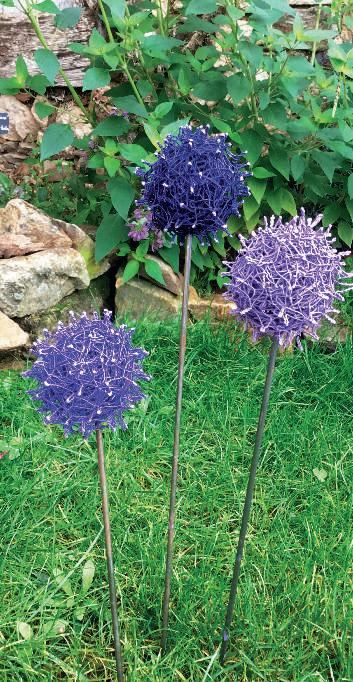



Caroline has been a lecturer in horticulture for 20 years and now runs a nursery and ‘garden craft’ courses in the Haute-Vienne at Le jardin créatif
things during Covid, we have now boiled it down to the most popular workshops using the main materials and processes that make us unique.
One of our most popular workshops is the willow sculpture. Paul has developed a range of animal sculptures using willow rods that can be made in a day and are all aimed at complete beginners – you do not need to be artistic! Paul guides everybody through the step-by-step process of making the sculpture and everyone ends up with something they can be proud of! We make a range of animal sculptures including hares, herons, dragonflies, stag head, and Highland cow head being amongst the most popular.
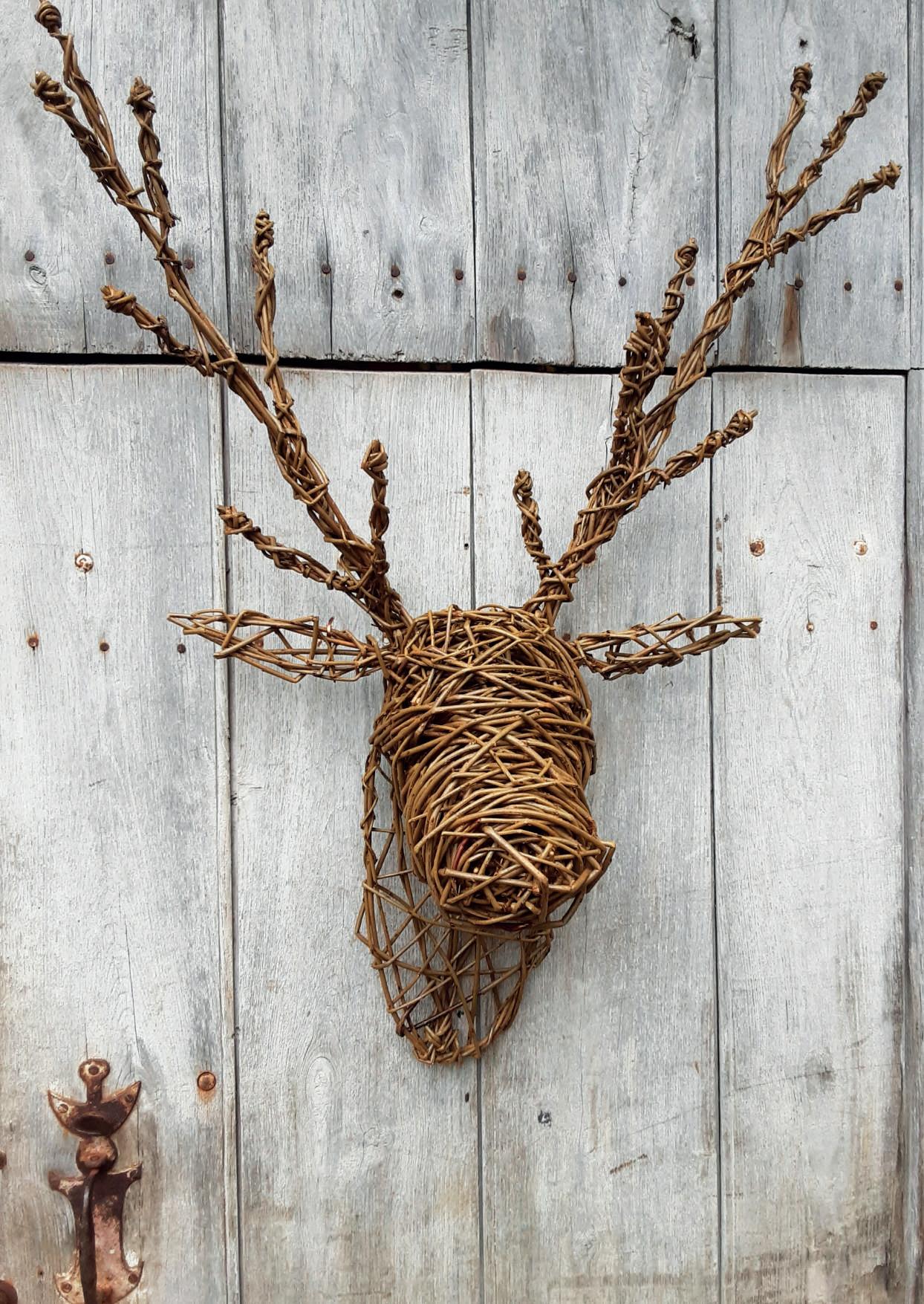

We are often asked why we don’t grow our own willow - unfortunately it is too dry where we are, willow for weaving needs to grow in constantly damp soil in a humid microclimate, and we have to import most of our willow from Somerset where the stems grow long and fine and are flexible enough for sculpture. We have also sourced willow (or ‘osier’ in French) from the Loire Valley and the Gironde, but we have found that the willow grown in France is thicker and less flexible - we do use it for more rigid structures such as the garden obelisks but in the main we find it is too difficult for beginners to work with on the sculptures. We get through about 120 kg per year and at around 12 euros per kg we have to be very accurate with quantities. The ‘farmed’ willow is dried for long term storage and we have to soak it in water for a week to make it flexible again. After soaking it has to be used within 48 hours.
Chicken wire sculptures are another popular course, and while chicken wire is not technically a natural material, people often have some old chicken wire in their shed, or a part-used roll that can be ‘repurposed’. We have to buy new chicken wire due to the amount that we get through, and Paul has to cut up an entire roll using an angle grinder to create enough small pieces for a whole class (not to be tried at home without the correct PPE and a very competent user). Our customers learn how to use its properties to make a range of animal and flower sculptures. The most popular workshop to date is the Allium flowers; they bloom all year round and even the butterflies think they are real! There must be so many of them in gardens all around the Limousin that we are thinking of naming them as a new species!
On

sculptures out of old tools and other rusty objects and flowers from old crockery and glassware. Every sculpture made is unique and everyone has a lot of fun!
our junk art workshops customers learn basic welding and create sculptures out of old tools
Unfortunately, both of these materials have shot up in price recently and the willow in particular is difficult to source, so we have started to get creative with items that a lot of people would think of as ‘junk’. On our junk art workshops customers learn basic welding and create
We also run courses in stained glass, making a decorative ‘suncatcher’ for your garden or a small panel that could be placed either indoors or outdoors. Again we do have to purchase some of the materials for this but we also scour the vide greniers and resourceries for old glass bowls and plates, lampshades etc to include in our panels. throughout the year, you can view our scheduled courses on our website and Facebook page, and you can also request a course or workshop on a date to suit you. We can do bespoke group bookings for a group of friends, and we can also come to your venue for willow and chicken wire workshops.


Our garden and nursery are open every Saturday from early March until the end of October from 10h - 16h, (fermeture exceptionnelle 14th September). Entry to the garden is free and you can spend as long as you like getting inspiration for your garden, and we are happy to answer your questions and give free gardening advice on Saturdays. Courses run throughout the year, you can view our scheduled courses on our website and Facebook page, and you can also request a course or workshop on a date to suit you. We can do bespoke group bookings for a group of friends, and we can also come to your venue for willow and chicken wire workshops.
Facebook: @LeJardinCreatif87
Website: lejardincreatif.net
YouTube : Le Jardin Creatif France@carolinewright1498



SEPTEMBER IS HERE, AND THERE’S PLENTY TO BE DONE WHILE YOU’RE OUTSIDE ENJOYING THE LAST OF THE YEAR’S WARMTH!
This month calls for a mixture of activities – some tidying up after the summer, some extending the summer flowering period, and some preparing for 2025 with some planning! Lots to do! It’s quite difficult to spot the difference between several of these tasks but all will help you to extend your enjoyment of your garden this year and get even more out of your garden next year.
Autumn is the time to carry out essential lawn maintenance to avoid waterlogging and compaction. Aerate your lawn with a garden fork, removing thatch from the surface with a rake and repairing dead patches. Once your lawn in ‘cleaned up’ apply an autumn fertiliser which is rich in potassium and low in nitrogen, following the instructions on the packet carefully. Spend some time on your shrubs and roses - prune late-summer flowering shrubs, climbing roses and rambling roses once they've finished flowering, unless they are repeat-flowering varieties, in which case leave them until later in the year. It’s quite important to keep camellias and rhododendrons wellwatered at this time of year as this helps the strong development of next year's buds. And in the fruit garden, if you haven't already, cut back the fruited canes of your summer raspberries, leaving the new green canes for next year's crop. Tie in next year's raspberry canes to support wires or fencing. It’s worth considering covering uncultivated areas with green manures such as buckwheat, clover, and ryegrass which will improve the soil and keep weeds down over winter.
They tend to have a high rate of success. You can use softwood cuttings to propagate new plants from favourite annuals and perennials. These plants include some deciduous shrubs such as buddleia and hydrangea, hardy and tender perennials such as fuchsias, salvias and pelargoniums, penstemon and verbena, and a few trees such as birch and magnolia.
1. Fill a 9 cm pot with damp compost. You can put between 4 and 6 cuttings in each pot, just ensure any remaining plant leaves are not touching.
2. The best time to take cuttings is first thing in the morning when stems are fully hydrated.
The other activity I commend you to try is softwood cuttings
3. Cut a 5-10 cm section of shoot from the parent plant, using a sharp clean knife or scalpel. Choose shoots that are not flowering, as these are more likely to produce roots. Take care not to crush or squeeze the stem. Wrap the cutting in a damp paper towel and place in a plastic bag until the next step. Take care to label the cuttings at this stage, otherwise you may not remember what they are next year! Here I speak from bitter experience!


ByRonnieOgier
Ronnie is a passionate gardener and now loves sharing her years of experience of success and failures in her own garden and sharing it with you. Also a keen runner, having been bitten by the ‘Couch to 5K’ bug!
bag on a regular basis to allow it to breathe.
8. Freshly cut stems may wilt and look rather pathetic during the first week or so. Don’t panic; with careful watering, they will usually perk up.
9. The cuttings will probably take 6-10 weeks to root; keep the compost moist, not wet, during this time. Once they have rooted, harden them off for about two weeks, then pot them on individually. Check regularly for any rotten or dying material and remove it.
10. Keep the young cuttings protected during the winter in a greenhouse or on a window sill. If on a window sill inside turn the pots regularly to prevent all the growth being towards the light.
11. In the early spring, pot individually into 9 cm pots and grow on in warmth to encourage the formation of a strong root ball. Keep the pot damp but not wet by watering from below. Once you can see the roots from the bottom of the pot your new plant is ready to plant out.
Some of my perennials have become very large - too large for their current position. My choice here is to start by dividing these perennials, this will keep them healthy and vigorous year after year, and it also gives me the opportunity to relocate those in the wrong pace and also multiply the stock to put in different places or to give away to friends and family. For some of the plants I’d like more of, I will take softwood cuttings and propagate during the winter. One advantage of cuttings is that they produce an exact copy of the parent plant, whereas taking seed and sowing these may result in slight variations in colour or even a new variety.
Softwood cuttings are taken from some deciduous shrubs and other plants in summer, from a soft section of the stem, not the mature woody growth at its base.
4. Now get your cuttings ready for planting. At the top make a diagonal cut above a bud and at the bottom make a straight cut directly below a node - this is where a leaf attaches to the stem and roots grow easiest from this point. If you leave a section of stem below the node, it often rots. Remove most of the leaves on the cutting and cut any larger top leaves in half to help maintain moisture.
5. Dip the base of the cutting in hormone rooting powder; it may help to make a small ‘wound’ at the base of the cutting. This helps the roots grow at the sides and not just down.
6. In the pot of compost make a hole with a dibber or a pencil and insert the cutting, base down, so that the first pair of leaves sit just above the level of the compost. Put the cuttings around the outer edge of the pot and water the pot.
7. Cover the pot with a plastic bag and keep it in a warm place, out of direct sunlight, but make sure to remove the
Cuttings provide some precautionary protection for your garden if you lose some of the perennials you love in a bad winter. Once you see how simple it is, there are so many possibilities!
At this time of the year the days are getting shorter, and you may spend more time inside, after you’ve taken your cuttings, so there is time now to plan from your armchair! It’s worth making rough sketches or plans of your flower borders and vegetable plot and marking on these what worked in your garden and what didn't. You can also mark where you have space to add bulbs and new plants. Now is the time to order spring-flowering bulbs for planting as soon as they arrive. There are some very good online bulb suppliers who normally deliver straight from their fields and depots - they will not have been kept in a warehouse or a warm atmosphere, or on the shelves of a garden centre for a long time. Take time to order trees and shrubs for autumn and winter delivery; these will grow vigorously next spring if planted in the autumn/winter. hese plants are best planted during their dormant season. There’s still plenty to do!



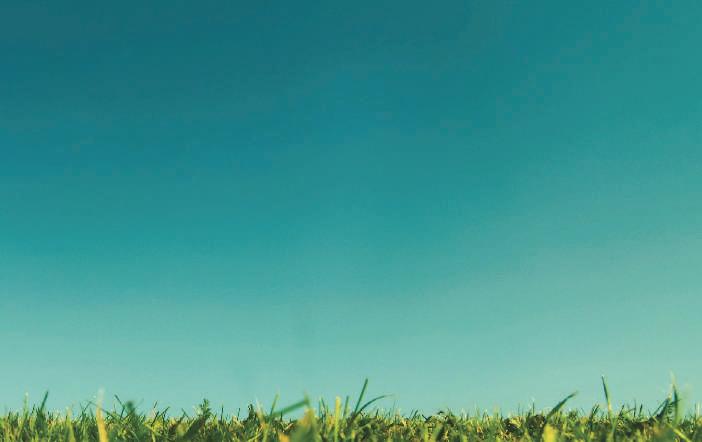



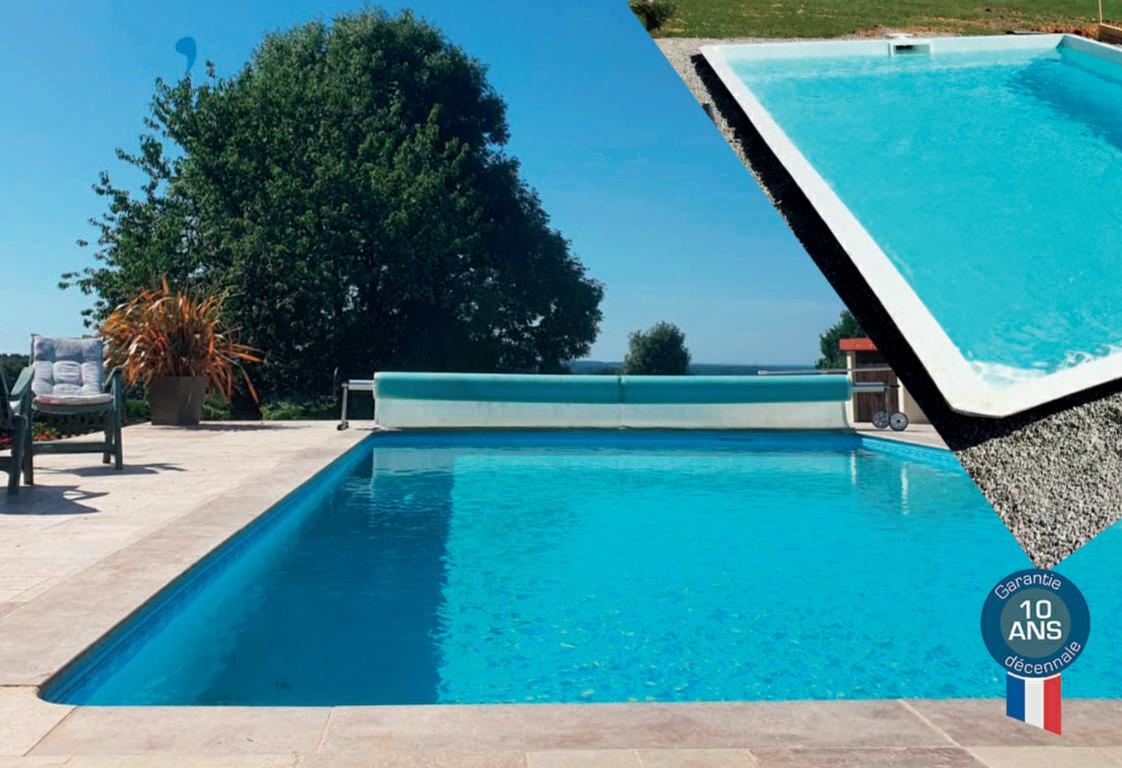














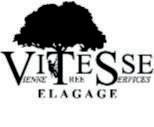

















SEPTEMBER WILL BRING THE RETURN OF SOME SPECTACULAR AUTUMN CONSTELLATIONS WHICH CAN POINT THE WAY TO MANY OTHER OBJECTS IN THE NIGHT SKY
We can see a superb array of planets as they parade across our darkening autumn skies again. Read on to find out all the details. My very early birthday treat will be a small partial eclipse of the Harvest Moon, which you too could enjoy from your location. With the use of a telescope we should be able to observe, and possibly image, a 'Ganymede shadow transit' of Jupiter. Have you ever seen a 'Nova’? This event has been predicted by astronomers to occur at some point in the coming weeks (or months) as the star T CrB - located next to the constellation 'Coronae Borealis' - is due to suddenly brighten again after 80 years!!! So much to look up for and so much more time now that the nights are a little longer again. Moon Phases and observing tips.
New Moon Phase3rd Sep, just before 03h00
First Quarter Phase11th Sep, around 07h00
Full Moon Phase18th Sep, 03h30
Last Quarter Phase24th Sep
A pretty thin crescent Moon - a two day old Moon - will be visible just 1.2 degrees south of the planet Venus and on the 17th, an almost full Moon can be found only 0.3 degrees north of Saturn.
On 18th September, and in the early hours of the morning, we will have the chance to observe (and possibly image!), a very small and partial Lunar eclipse. The exact times will vary depending upon your exact location. To find out when and what you can observe you can put your location details into the site www.timeanddate.com. From my location, I will prepare my camera for the following timings
02h41 Penumbral Eclipse begins - the Earth's penumbra starts touching the Moon's face
04h12 Partial Eclipse begins - the Moon starts to become a little red
04h44 Maximum Eclipse - the Moon is closest to the centre of the shadow
05h15 Partial Eclipse ends
06h47 Penumbral Eclipse ends
Good luck with your observing and even imaging of this beautiful event. Autumn Constellations
This is a wonderful time of the year to go exploring in 'The Sea'. It is a region of the sky where you can find many aquatic creatures. These include;
Capricornus - the Sea Goat, which is the smallest of the twelve constellations in the zodiac. It is formed by faint stars, found towards the southern horizon and just below Aquarius. You can explore the pretty globular cluster M30 with binoculars or a telescope. It is 6,000 light years from Earth and it will appear as a hazy patch when viewed with a small telescope.


Claire Wardlaw, originally from Edinburgh, lives in the Charente with her husband. Since their move to France, Claire has become passionate about astronomy
Jupiter is in a great position for observing and imaging
Aquarius - the Water Bearer, found towards the left of the Milky Way and above the southern horizon contains, at its centre, the distinctive Water Jar. Just above and to the right of this constellation's Alpha star Sadalmelik you can find one of the largest known globular clusters M2. Discovered in 1746 by the Italian astronomer Jean-Domenique Maraldi, this cluster will appear as a fuzzy star with a small telescope. Just below Aquarius, and with a larger telescope, you may be able to find the 'Eye of God'. Named as such due to its ocular appearance this planetary nebula has the largest apparent size and is thought to be the closest to Earth, at around 700 light years' distance.
Planets this month
Mercury - a morning planet best looked for on the 5th as it rises before the Sun brightens the sky on the eastern horizon.
Venus - an 'improving' evening planet which will be best towards the end of the month.
Cetus - the Sea Monster or Whale, the fourth largest, but quite a faint constellation. Found towards the south eastern horizon and just to the left of Aquarius, this region is home to one of the largest Galaxies in the Messier catalogue. M77 sits below the head of the sea monster and using a smaller telescope it will appear as a fuzzy star.
Pisces - the Fish, which sits just above Cetus and on the Ecliptic and is therefore visited by the planets as they journey across the sky. It is the faintest constellation of the zodiac so trickier to find. It is formed by two fish whose tails meet and are tied together with a ribbon towards the bottom of the constellation. The first fish is named the Circlet and can easily be found with the naked eye just above Aquarius.
Mars - on the 9th of the month, should you have a telescope, Mars will appear close to the open cluster M35. On the 25th and 26th it will be passed by the Moon. Look towards the east at around 04h00!
Jupiter - is in a great position for observing and imaging as it will be at an altitude of 60 degrees during darkness. On the 13th this month it will be possible, with a telescope, to observe the shadow of the moon Ganymede transit across the face of the parent planet. Exact times may vary for you , but start to observe from just before 01h00 and witness the transit lasting until around 02h45.
Saturn - on the 16th and 17th an almost full Moon will pass just below the planet fairly close to the eastern horizon at around 23h00.
Happy Stargazing!







Perhaps this event will have happened by now, but if not, keep looking up for this 'Nova' event throughout the month! A star system 3,000 light years away is set to become visible to the naked eye this year, in an event that will see its apparent brightness temporarily increase. T Coronae Borealis, also known as T CrB or the 'Blaze Star', last brightened in 1946, and astronomers have predicted it could brighten again between now and September 2024. This brightening event is known as a 'nova', which means 'new star' in Latin, so-called because it describes how a previously dim star can suddenly reach prominent nakedeye brightness in the sky. You can look for the constellation Coronae Borealis towards the west between Bootes and Hercules.
If you haven’t already, download an app for your smartphone to map out the sky for you!
The Penumbra is the outer shadow which is cast onto the Moon during a partial or total eclipse. When the Earth lies between the Sun and the Moon various types of eclipse can occur. During a total eclipse the full Moon will move through all parts of the Earth's shadow, from the weaker Penumbra (outer shadow) to the intense inner umbra and then the Penumbra again as the eclipse comes to an end.


The NASA/ESA Hubble Space Telescope has captured this vivid image of spiral galaxy Messier 77 — a galaxy in the constellation of Cetus, some 45 million light-years away from us. The streaks of red and blue in the image highlight pockets of star formation along the pinwheeling arms, with dark dust lanes stretching across the galaxy’s starry centre. Source: NASA, ESA & A. van der Hoeven. Initially identified as a nebula by the French astronomer Pierre Méchain in 1780.
The Great Comets
SEPTEMBER 6, 1618: The German astronomer and mathematician Johannes Kepler observes Comet 1618 I (new style C/1618 Q1) – the first of three “Great Comets” that appeared that year – through a small telescope, the first recorded telescopic observation of a comet.
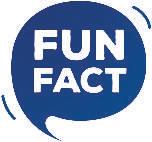





THE FOX IS VERY FAMILIAR TO US THROUGH OUR CHILDHOOD READING, AND THROUGH ARGUMENTS ABOUT HUNTING, BUT WE RARELY SEE ONE
For us Europeans, the fox we know and love is the Red Fox. It is widespread from the Atlantic, north of the Mediterranean, up through Scandinavia and as far as the Black Sea. It is in the least danger of extinction of any of the foxes, is vigorous, wide-ranging and adaptable.
Where Does the Fox Fit in the Scheme of Things?
The Red Fox is a member of the Canidae or dog family. Typically, the predominant colour is red or red-brown, but this can range from yellow to darker brown.
During the winter, the fox’s coat is thick and warming, but from about April it begins its moult to a lighter coat. This may alter the animal’s colour slightly. The characteristic identifiers are its black muzzle, its black legs, and its bushy tail, tipped with white – the brush. Indeed, it seems to be the brush that has given the fox its familiar name, deriving from the Indo-European Puk, meaning thick-haired tail. A male fox is called a Dog-fox or just a Fox, a female

ByMikeGeorge
Mike George is our regular contributor on wildlife and the countryside in France. He is a geologist and naturalist, living in the Jurassic area of the Charente
(owing to the careless way the AngloSaxon mixed their “f”s and “v”s) is a Vixen, while the young are kits or cubs.
Indeed, it seems to be the brush that has given the fox its familiar name, deriving from the Indo-European Puk
Foxes have good eyesight, but for hunting rely very much on smell and upon acute and very directional hearing. They can localise a sound to within 1°. There is also some evidence that they possess a sense of the Earth’s magnetic field and can use it to orient themselves.

Foxes will eat almost anything. They have the typical canid carnassial dentition (where the molars, instead of grinding against each other, as ours do, slide past each other like the blades of scissors, and can cut the toughest flesh) and this means they can tackle a huge range of foods. They are primarily hunters, but by no means are they α-predators. They will go for insects, birds’ eggs, small and medium-sized mammals. They tend not to go for anything that will fight back, which is why adult cats and foxes tend to live in a sort of armed neutrality.
They also eat vegetable matter (getting, presumably, their 5-a-day ration). However, apart from Aesop with his sour grapes, and the Song of Solomon with foxes harming vines, there is not a lot of evidence that they concentrate on vineyards and grapes.
remarkably close proximity to human habitation. Most folks playing host to a family of foxes are blissfully unaware of the fact!
Then Why Are They Such Wholesale Slaughterers?
Most folks playing host to a family of foxes are blissfully unaware of the fact!
Their favourite prey, of course, is human left-overs. This neither runs away nor fights back. Foxes make a good living by knocking over black bins and foraging at leisure through human throw-outs. This is why the trend towards urbanisation (or at least suburbanisation) is increasing. Foxes, owing to their stealth, agility, and cunning have managed to set up home in
Sadly, what they have become notorious for is their ability to kill on a large scale. Anyone whose hen-house has been raided by a fox will know the heartbreak of seeing cherished birds killed in a seemingly meaningless way and left behind. However, this is the result of the way the birds have been protected. The fox, when it encounters a flock of birds, has one instinct –to kill. However, in an open environment the birds, however suddenly attacked, will each try to get away, and most will succeed. Therefore, the fox has developed the technique of striking right-and-left rapidly, in the hope of clawing down one or two birds before the rest escape. In a hen-house all the birds are trapped, and continue to flap about, confined in the fox’s immediate vicinity. By instinct, the fox will continue its killing strategy until all movement has stopped. Then it will only take what it needs and go, in the vain hope that it could come back for the rest at need. This is counterproductive for the
fox, of course, because it is delayed in its killing, left exhausted and therefore more vulnerable.
Foxes do not necessarily mate for life, but they do tend to live in family groups. Life expectancy for a fox kept in ideal conditions can be up to 15 years, but the normal lifespan of a wild fox is 3 to 5 years. Incidentally, they do not take well to domestication. Young foxes taken in as orphans may be tractable for some months, and they do not seem to attack humans, but as adulthood approaches they become very defensive and can be aggressive to anything unfamiliar. Also, they can be very aggressive to anything that looks like a prey item. I am told that shoes suffer very badly, and should your partner be in the habit of draping their mink coat over the back of a chair, domestic harmony is likely to suffer.
The Russians have had some success in domesticating the Silver Fox, a relative of the Red Fox, and by selective breeding have created a domesticated strain, so if you are dead-set on owning a fox, that would be the route to follow.
In the wild, vixens come into season in December, when mating takes place. About 50 to 55 days later, the cubs (often 3 to 5) are born, usually in a den built as a tunnel with a brood and a living chamber.


They are woolly-coated, blind, and with short legs and droopy ears. After 15 days the guard-hairs grow to protect the coat, the eyes open, and the ears erect. The Vixen has been protecting them all this time, feeding and controlling the temperature of the litter. If the mother dies, it is not unknown for the father to take on the raising of the brood. Unmated first-year females from the previous season will also take a hand in raising the cubs.
Foxes communicate more by gesture and posture than by voice
Young adult foxes, particularly males, will seek out new territories if they are available, but they do not have the urgency of some other predators. Also, they are unusually mobile – foxes have been monitored undertaking journeys of over 100 km.
After about 40 days the cubs are weaned, and then come out into the open to learn the skills of life – and to play! This is when you are most likely to see them. Normally, foxes are active after nightfall and around dawn.
Urbanisation is making it more likely that one may have a chance to see foxes, but one way they make themselves felt, even in the country, is by vocalisations.
When I was learning about natural history, I remember seasoned old naturalists playing tapes to us of rural sounds. There was often a long, eldritch howl, starting as a bark and tailing gradually off into silence. “Ah”, we were told, “that’s the Vixen’s scream. She’s
looking for a mate.” We were then treated to various other yaps, barks, and howls, each with a careful narrative of what was going on in the vocalising fox’s mind. It wasn’t that simple, of course. Foxes communicate more by gesture and posture than by voice, but, of course, the voice does have a part to play. One sure thing is that female animals – even human ones – do not go around yelling for a mate for all to hear. It is far more subtle than that! Threats, greetings, warnings, identification calls, all take place, but only a fox would truly understand them. The subject of fox communication has degenerated into a dog’s (or fox’s) breakfast. What used to be thought a vixen’s mating invitation is now thought to be the cry of a submissive (but not subjugated) adult male. Tune in next week for an update! There is also a whole range of calls that kit-foxes make to indicate their food and other wants. There was a time when these cries were only to be heard on summer nights in the deepest country. Now you may hear them coming from next door’s garden!
If you are going fox-hunting, please do it only with a camera. I know that in some parts of the world (Australia, New Zealand) the fox is Public Enemy No 1 for its predation of marsupials who have no defence, but in Europe and Britain the fox (hen-houses apart) has never been a major predator, and hunting the fox was looked upon as “pure sport”. Thank goodness that has now ended.




When I was young, everyone knew the little hedgehog Erinaceus europaeus (French, le hérisson) as a welcome garden visitor, eager to eat garden pests and doing no harm. Like in many other parts of Europe, hedgehog populations in France have been decreasing over the past few decades due to the loss of habitat, the use of pesticides and chemicals and road mortality.
Hedgehogs are a curious race, quite unrelated to porcupines. The latter are rodents pure and simple, which have adapted their body hairs into defensive spines in the same way as the hedgehog. There is also another creature called a Tenrec, which lives in Madagascar and other islands in that area, and looks superficially like a small hedgehog. It seems, however, to be completely unrelated to our hedgehog – another example of nature re-inventing a good idea.
Hedgehogs are very much Old World animals. One extinct example has been found in the rocks of America, and they were quite unknown in Australia, New Zealand, and related territories until they were introduced (remember, hedgehogs are placental mammals, not marsupials as are the native mammals of Australia and New Zealand).
In France we are only liable to find the European hedgehog. This was originally classed among the Insectivores, which meant that the incisor teeth were not especially developed, and the teeth carried sharp projections which intermeshed to promote the efficient crushing of hard insect exoskeletons.
Recently those that study these matters have realised that the Insectivora had developed into a bucket classification into which a large number of creatures had fallen, many of which had little or no evolutionary connection with each other. Classifiers do not like that, so the Insectivora has disappeared as a group, and much thought is being expended on re-classifying a whole range of animals, including the hedgehog.
In fact, hedgehogs eat a wide variety of items, mostly the sort of things that a good gardener will be pleased to see the back of. They are noisy little creatures, though, given to loud snuffling (hence the hog part of the name), and when male and female meet to pay court in the moonlight, the squealing they make in mutual serenade is indescribable!
The hedgehog is celebrated for its ability to roll up to avoid danger. In fact, in these days of fast cars, rolling-up can lead to more trouble than otherwise, but before that, it was a very good strategy. The Ancient Greeks used to say that the fox knows many tricks, but the hedgehog knows one very good trick. What happens is that the little creature tucks its snout and paws into its belly fur and then contracts a purse string muscle that goes all round its lower back and sides and over its neck, thereby pulling its prickly skin tightly over itself, erecting its


ByMikeGeorge
Mike George is our regular contributor on wildlife and the countryside in France. He is a geologist and naturalist, living in the Jurassic area of the Charente
spines and preventing anything getting at its vulnerable belly. In this defensive posture, a badger is about the only animal apart from man that can make a meal of a hedgehog.
Insectivora has disappeared as a group, and much thought is being expended on re-classifying a whole range of animals
Hedgehogs can climb a bit, but they are very good at falling. They fall onto their spines, which are bent at the lower end and help cushion the blow. A hedgehog can fall several feet without harm. In this connection, it is worth saying that, if you have a pond or any pit with steep sides, please arrange for one side to slope, or for some form of ramp to be present, otherwise the hedgehog can be trapped, and drown or starve.
Sadly, a hedgehog these days is quite a rare sight. Sometimes this is to do with the neighbours. If badgers move into the area, hedgehogs move out, for reasons outlined above.


The old adage is, “Good fences make good neighbours”, but hedgehogs are wide-ranging animals, and need to cover large areas of land to find their food. Tight-woven fences, walls etc. prevent them from doing so. Please make sure that there are gaps enough at ground level in your boundaries to allow, not just access, but movement across your land and into other fields and gardens.
And please do not over-preen your garden. Leave some rough areas, a log pile or two, anything for refuge and a bit of cover. And always remember; hedgehogs love slugs, and eat all they can find. If you are putting down slug pellets, you are making your slugs poisonous to hedgehogs, and this may be one factor in their reduction.
At this time of the year, hedgehogs are preparing for their winter hibernation. Curled up under a pile of leaves or branches, the hedgehog slows his metabolism until it is barely ticking over, and thus it can survive quite punishing conditions. If you decide to burn some accumulated rubbish during the winter, please don’t just set fire to it. Check to see if something is using it for a winter retreat.
In spring the hedgehog will awake, and push itself into activity by absorbing a special store of fat in its body. In order to make this fat, of course, and to provide the stored energy for the winter sleep, the hedgehog needs to have eaten well in autumn. It must weigh at least 600 grams, and preferably more, by the time it hibernates.
This is usually no problem for an adult, but if the late summer has been warm and sunny, some hedgehogs have a late brood of babies, and these usually do not have the time to build up enough fat and will probably die.
Hedgehogs are normally nocturnal creatures, but it is not unusual to see them during the day, especially in autumn. However, a hedgehog out in daylight may be ill – or it may just be hungry.
If you find a small hedgehog wandering forlornly in late autumn or winter, please check its weight. If it is less than ½ kg it is doomed. However, you can save it.
Of course, if it is injured, the vet is the first port of call. Bleeding or any obvious injury needs attention, but a check over anyway is no bad thing. Most vets will not charge to treat an obviously wild animal, especially if they know you are prepared to give it after care.


However, if nothing seems to be wrong, try giving it
something to eat. NOT bread and milk; its stomach can’t handle it. Baby hedgehogs can cope with their mother’s milk, but after weaning they lose the vital enzymes to process lactose, and milk gives them diarrhoea.
Fish is not good either, mainly because hedgehogs just do not like it! The best thing for your new friend is wet dog or cat food containing white meat (chicken is always accepted). Put the food and some water down and leave the little creature to itself.
In recent years, a whole lot of strange laws have appeared in France relating to the keeping and tending of wild animals. Most of these seem to be aimed at stopping people just taking wild creatures and trying to tame them (which is good) but they also seem to be counterproductive if you are just intent on seeing a small wild creature through a difficult patch. Check with your vet; if the matter is serious, the vet will probably take over. If it is just a matter of feeding and temporary shelter, if your vet is aware of your care and approves, then that should protect you from officialdom.
Give the hedgehog something to hibernate in. A large, stout box, tipped on its side, filled with straw is good. I used tea chests in the days when one could get them, but they seem to have vanished. Put it near the hedgehog in a cool but frostfree spot such as a shed, greenhouse or barn. The chances are, when the hedgehog has eaten as much as it can, it will crawl into the box and arrange the straw into a nest. Put food and water down for it, and occasionally it will wake and eat some. Be prepared for it to incorporate the dishes into its nest, however, so old crockery only. In the days of tea chests, the hedgehog would amuse itself by stripping the tinfoil off the inside of the chest and decorating its nest with it, by winding it intimately into the straw. You can purchase hedgehog shelters, there are many to choose from! Or better still, make yourown.
In spring, the hedgehog will awaken and potter off about its business without a word of thanks. All you get is a feeling of a job well done and a hedgehog who will keep your garden free of pests!

WARNING
A sleeping hedgehog snores powerfully, so put the nesting box out of earshot!



Most gardens have a supply of the materials and sites that are suitable for nests – gaps under sheds, compost heaps, shrubs, piles of leaves or behind stacks of logs and under spare building materials. If hedgehogs want to spend a winter here, they should be able to
get on and build their own shelters. However, you may like to provide hedgehogs with a more permanent structure and give them a helping hand.
For full instructions from the BHPS: www.britishhedgehogs.org.uk/leaf lets/L5-Hedgehog-Homes.pdf

Based on wood that is 2cm thick. If you use a different thickness, you will need to adjust the measurements to suit

Shelter images from the British Hedgehog Preservation Society
www.british hedgehogs.org.uk

Do not creosote or treat the wood with non-water based preservatives or paint. Even water based preservatives should only be used on the outside of the box


























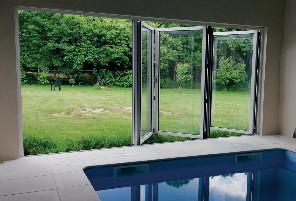
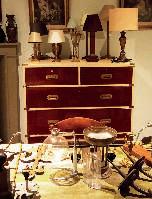
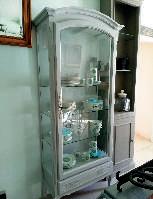














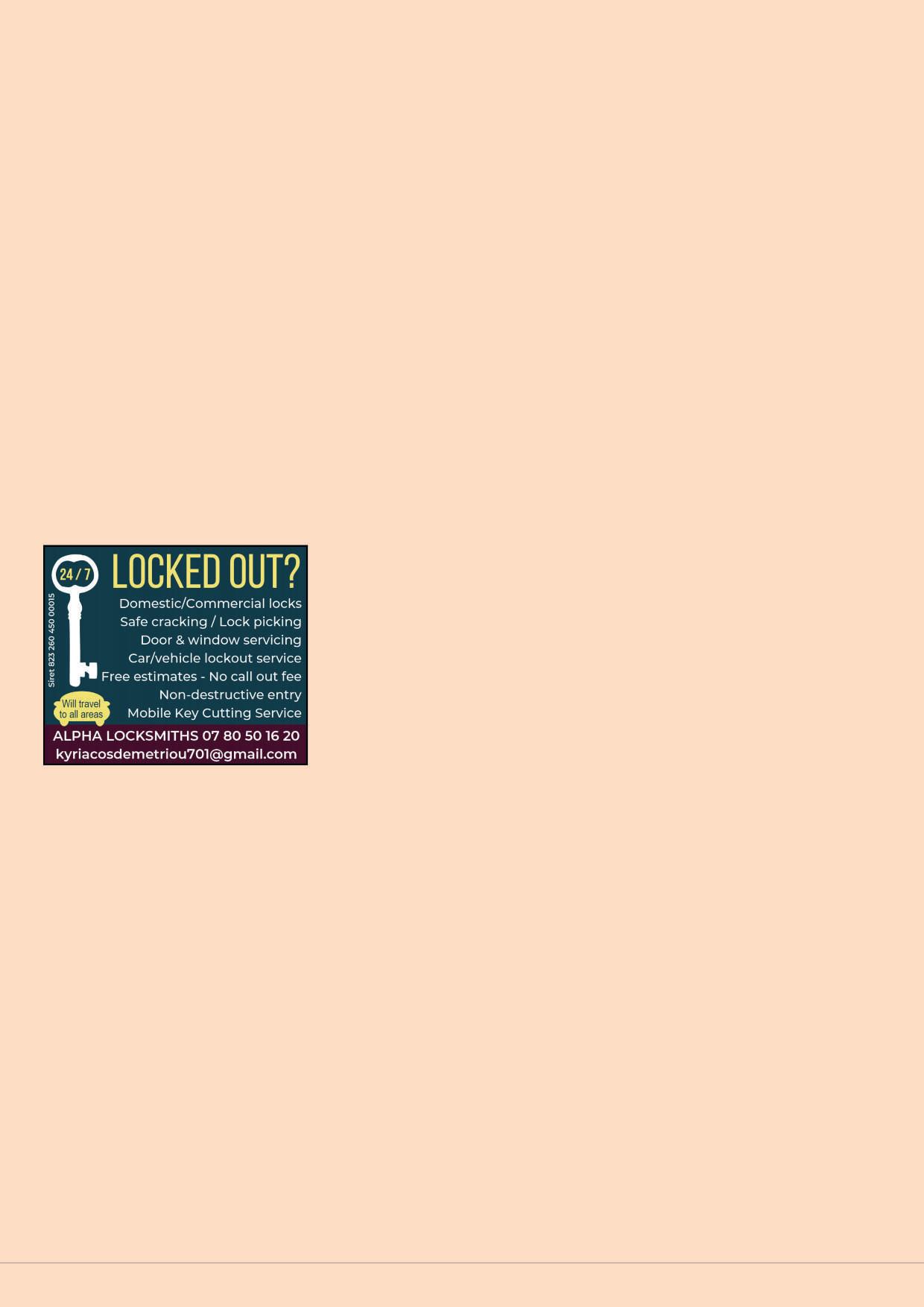










Well September came around quickly.
I hope you enjoyed the summer. Maybe it’s still here? By the time you read this, I’ll have had two holidays. 2 days back in ’etceteraland’ seeing friends and 4 days in the south of France watching a waterjousting tournament. So 6 days in total including travelling time. What an extravagant life I lead! You know what they say, if it’s not about the glamorous satellite TV life, then it ain’t for me, baby. Or something.
No, Freesat is not the same as Freeview. You cannot use a dedicated Freeview box for the reception of UK TV via satellite. Go for the one with ‘sat’ in the name.
You mustn’t be afraid to get references to make sure that whoever you get to do your satellite TV work is competent
I had the misfortune - or maybe good fortune as I got paid to sort it out - of fixing the work of some hopeless satellite TV installers recently. They visited a Dutch
couple who wanted to use their Canal Digitaal system in France. No problem, said The Lone Ranger and Tonto. We can fix it (spoiler alert - they couldn’t). Oh, wait, you need to receive both Astra 1 and Astra 3 from the same dish? That’s not possible. What we’ll do is half-arse it so you don’t even get all the channels from one of the satellites, let alone both. Luckily, these cowboys do not advertise in etcetera, and as the job was in the Vendee, probably aren’t likely to feature on your radar.
However, the point is that you mustn’t be afraid to get references to make sure that whoever you get to do your satellite TV work is competent.
For info, and I know this is a bit niche, but for Astra 1 & 3 for Canal Digitaal, you need
▪ UK free-to-air/ Freesat
▪ French TV - TNTsat/Fransat
▪ Set up Netflix/Amazon Prime etc
▪ Internet via 4G & 5G
▪ CCTV & alarm systems
▪ Installations & service
SATELLITE TV
STUART WALLACE

THE FRENCH HOUSE
a 4.3° monobloc LNB which can receive both signals using the same satellite dish. Align it to Astra 1 and Astra 3 will follow if the LNB skew is correct. Some even have a helpful paper template to help you do this.
Want to make it easier to find what you like in the Freesat channel guide? Have a look at: www.freesat.co.uk/news/ tech/customise-your-tv-guide to reduce the amount of scrolling you do.
Please remember that I no longer cover the same areas as I used to. I cover a 90 mins radius of 79240.















































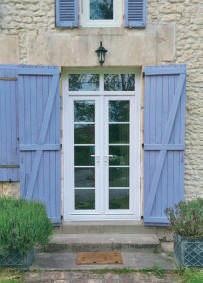

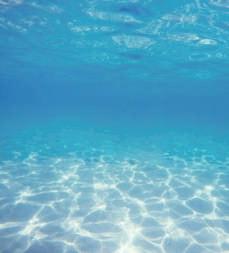






























PLANT: Diggers 2.2 and 3 tonne / Dumpers Plant Trailer / Roller. TOOLS: Whacker Plate / Electric Breaker / Grinders / Drills Rotovator plus much more - see website www.davesdiggers.com Email: davesplanthire@gmail.com
Tel. 06 75 18 09 13 PLANT & TOOL


~ CASH PAID FOR SCRAP ~ House/Barn Clearances - Pre & Post-sale Rubbish Removal / Déchetterie Runs Collections / Deliveries
Call Will Whiting 06 74 21 47 71 www.facebook.com/willwhiting87 covering depts 87, 16, 19, 23 & 24






Scaffolding
Safe, secure, adaptable. Meets all safety regs. Covered by full public liability insurance. Delivered, erected, and dismantled Over 20 years’ experience. Free Quotes.
Depts 16, 87, part 24, 17, 79 & 86 Day: 07 85 44 26 66 / Eve: 05 45 66 49 87 martin.clare6@gmail.com





















































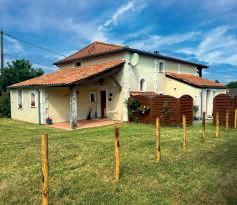



We all need each other













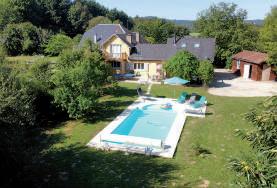










































● Wood and pellet boilers
● Air conditioning
● Solar panels
● Wood or pellet burning stoves
● Air source heat pumps
● Radiators
● Solar hot water systems
● Thermodynamic water heaters
● English speaking ● Free energy assessment of your home
● Government grants deducted directly from quotations
● Assurance Décennale, (10-year Guarantee)
